Energy Trade in South AsiaCountries are shifting to using green energy sources to meet their energy needs and cut emissions. While South Asia may have ample renewable energy and hydropower resources, demand exceeds local supply, and the countries have had to rely heavily on imports. To help improve energy security in the region, South Asian countries have signed bilateral and multilateral agreements to trade energy, including India-Nepal hydropower projects and the India-Bhutan hydroelectric joint venture. Author: CUTS International Year: 2023 Download Tags: Energy, Trade, South Asia, Hydropower, Bhutan, India, Nepal World Investment Report 2023 This report monitors global and regional foreign direct investment trends and national and international investment policy developments. Across South Asia in 2022, FDI inflows rose by 4.4% to $58 billion while FDI outflows rose by 1.1% to $16 billion. South Asia posted the largest increase in greenfield projects, with announced greenfield projects in India more than doubling in 2022. Author: United Nations Conference on Trade and Development Year: 2023 Download Tags: UNCTAD, Trade, South Asia Strengthening Regional Cooperation for Seamless and Sustainable ConnectivityLeast developed countries, landlocked developing countries, and small island developing states in Asia and the Pacific have been working to promote seamless transport to facilitate trade. Bangladesh, for example, has completed construction of the new Akhaura (Bangladesh) to Agartala (India) railway link, and has begun operations of Oxygen Express train carrying liquid medical oxygen as well as regular freight services between Haldibari in India and Chilahati in Bangladesh. Across South Asia, countries have also been rolling out an Electronic Cargo Tracking System under the United Nations Economic and Social Commission for Asia and the Pacific to make cargo movement more seamless. Author: United Nations Economic and Social Commission for Asia and the Pacific Year: 2023 Download Tags: Trade, South Asia, UNESCAP, Regional Cooperation, Sustainable Development Goals, Railway, Bangladesh, India Connecting to Compete 2023: Trade Logistics in the Global EconomyConnecting to Compete presents the findings from the latest data from the 2023 Logistics Performance Index (LPI) and its six component indicators: Customs, infrastructure, international shipments, logistics competence, tracking and tracing, and timeliness. The seventh edition, which now covers 139 countries, is released following unprecedented disruptions in supply chains amid the global coronavirus (COVID-19) pandemic. Author: World Bank Year: 2023 Download Tags: WB, Trade, Logistics, South Asia Asian Economic Integration Report 2023This report shows how smart trade and investment policies, and regulatory cooperation in the Asia and Pacific region can help economies tackle climate change, recover from the pandemic, and support resilient and sustainable development. Analyzing topics including global value chains, investment, the movement of people, and regional cooperation initiatives, it outlines the economic and environmental challenges the region currently faces. It explores how trade and investment policies can support climate action and highlights why a joined-up approach is essential to help deepen the digital economy, strengthen supply chains and foster greener businesses, markets, and trade. Author: Asian Development Bank Year: 2023 Download Tags: SASEC, Infrastructure, ADB, Connectivity, Climate Change, Global Value Chains, Trade Review of Maritime Transport 2022Ships carry over 80% of the volume of global trade. In South Asia, intraregional shipping connections increased as India improved its shipping connections to Pakistan, Sri Lanka, People's Republic of China, the Republic of Korea, Malaysia, Saudi Arabia, Singapore, and the United Arab Emirates. The most connected port in South Asia is the Colombo port in Sri Lanka; the Colombo port ranked the 24th best port in the world in 2021. Author: United Nations Conference on Trade and Development Year: 2022 Download Tags: India, Sri Lanka, Transport, Trade, Global Value Chains Trade and Development Report 2022South Asia is projected to expand at 4.9% in 2022 amid inflation and high energy prices. Balance of payment constraints in Bangladesh and Sri Lanka have led these countries to place restrictions on the consumption of electricity. In India, where the economy expanded by 8.2% in 2021, the easing of supply chain disruptions and the rise in domestic demand has led to a deceleration in growth. Author: United Nations Conference on Trade and Development Year: 2022 Download Tags: UNCTAD, Trade, South Asia Significance of Padma Bridge in South Asia's ConnectivityThe Padma Bridge will improve connectivity and increase trade in the Bangladesh. The bridge increases connectivity in Bangladesh and is projected to improve the quality of life among nearby communities. The economies of nearby countries also stand to benefit, as the bridge improves connectivity among Bhutan, India, and Nepal, and improves mobility of people, goods, and essential services. Author: CUTS International Year: 2022 Download Tags: Transport, Trade, BBIN, Bangladesh, Bhutan, India, Nepal World Investment Report 2022 In 2020–2021, foreign direct investment (FDI) in South Asia fell by 26%, to $52 billion, with large mergers and acquisitions from 2020 not repeated in 2021. Flows to Bangladesh rose by 13% to $2.9 billion, while inflows to India declined to $45 billion. However, India announced new international project finance deals, including 23 in renewable energy. Outward FDI from South Asia, mainly from India, rose by 43% to $16 billion. Author: United Nations Conference on Trade and Development Year: 2022 Download Tags: UNCTAD, Trade, South Asia, Bangladesh, India, Renewable Energy Economic and Social Survey of Asia and the Pacific 2022: Economic Policies for an Inclusive Recovery and Development Rapid economic growth in Asia and the Pacific in the last three decades have lifted many out of poverty, through improvements in agriculture and manufacturing. Nevertheless, many countries have experienced increases in inequality in their countries since the 1990s. This publication argues that Asia-Pacific countries should prioritize inclusive growth, by allowing those from all socioeconomic groups to improve livelihoods, incomes, and education. While fiscal and health challenges posed by the coronavirus pandemic present challenges, achieving inclusive recovery is still very possible. Author: United Nations Economic and Social Commission for Asia and the Pacific Year: 2022 Download Tags: UNESCAP, COVID-19, Trade National Single Window: Guidance NoteElectronic national single window systems help stakeholders meet trade and transit requirements. Single windows allow trade and transit sectors to send information to multiple agencies through one platform, thereby helping reduce processing time and the cost of doing business. This guidance note compiles information on planning and implementing national single window systems that help countries comply with international trade regulations. Author: Asian Development Bank Year: 2022 Download Tags: ADB, National Single Window, Trade, Transport Basic Statistics 2022Basic Statistics presents economic, environmental, and social indicators used to track progress toward the Sustainable Development Goals. The publication includes new data for development indicators for 46 economies in Asia and Pacific, including those for the seven South Asia Subregional Economic Cooperation countries: Bangladesh, Bhutan, India, Maldives, Myanmar, Nepal, and Sri Lanka. Author: Asian Development Bank Year: 2022 Download Tags: Bangladesh, Bhutan, India, Maldives, Myanmar, Nepal, Sri Lanka, Trade, Sustainable Development Goals, Renewable Energy Asian Economic Integration Report 2022: Advancing Digital Services Trade in Asia and the PacificAs of December 2021, 73 South Asia Subregional Economic Cooperation (SASEC) projects worth $17.43 billion had been financed. The SASEC Program was able to sustain its momentum in 2020 and 2021 in spite of setbacks brought about by the coronavirus pandemic. In 2020–2021, the Asian Development Bank (ADB) committed $2.36 billion for 13 regional cooperation and integration projects in the subregion, including five transport projects, three energy projects, and five multisector/economic corridor projects. The SASEC Secretariat is reviewing the progress of the SASEC Vision initiatives to help make coordination mechanisms more effective and to improve resource mobilization. Author: Asian Development Bank Year: 2022 Download Tags: Trade, SASEC, ADB, COVID-19, Regional Cooperation Field Diary Phuentsholing: Largest Commercial Hub in BhutanThis study assesses infrastructure and trade logistics in Phuentsholing, Bhutan. It observed that several South Asia Subregional Economic Cooperation (SASEC) projects have helped develop trade and transport in Phuentsholing through the construction of four-lane roads and bridges. The study proposes ways to promote multimodal connectivity among the BBIN countries (Bangladesh, Bhutan, India, and Nepal), such as the further improvement of ports and related facilities in Phuentsholing to handle an increase in trade and transport. Author: CUTS International Year: 2021 Download Tags: Bhutan, SASEC, Trade, Transport, BBIN Quarterly Dossier: Catalytic Multi-modal Connectivity Initiatives in the BBIN Sub-regionVarious national, bilateral, trilateral, and subregional initiatives in multimodal connectivity in the Bangladesh-Bhutan-India-Nepal (BBIN) subregion support faster and safer trade and transport. These have multiple positive impacts, including those that improve delivery of services to deal with the coronavirus pandemic. This publication presents four stories that show the impact of infrastructure connectivity in BBIN countries. It provides an assessment of connectivity initiatives as well as suggestions to enhance the positive effects of these initiatives. Author: CUTS International Year: 2021 Download Tags: ADB, BBIN, COVID-19, Trade, Transport Beyond the Pandemic: Building Back Better from Crises in Asia and the PacificThe coronavirus disease (COVID-19) pandemic has interrupted trade and tourism worldwide, leading to job losses and rising poverty. Countries need to address weaknesses in economic and social protection systems, through national initiatives that can be supported by regional cooperation. United Nations Economic and Social Commission for Asia and the Pacific member countries endorsed the Action Plan to Strengthen Regional Cooperation on Social Protection in Asia and the Pacific. This provides a platform through which governments in South Asia could work together to help mitigate the impacts of the pandemic. Author: United Nations Economic and Social Commission for Asia and the Pacific Year: 2021 Download Tags: COVID-19, Regional Cooperation, South Asia, Trade, Tourism Basic Statistics 2021Basic Statistics 2021 presents development indicators—tracking the progress made by countries in achieving the Sustainable Development Goals. It includes data for 46 economies in Asia and the Pacific, including those for the seven South Asia Subregional Economic Cooperation countries: Bangladesh, Bhutan, India, Maldives, Myanmar, Nepal, and Sri Lanka. Author: Asian Development Bank Year: 2021 Download Tags: Bangladesh, Bhutan, India, Maldives, Myanmar, Nepal, Sri Lanka, Trade, Sustainable Development Goals, Renewable Energy ADB Annual Report 2020The Asian Development Bank (ADB) 2020 Annual Report details operational and financial results. In 2020, ADB continued its support for the South Asia Subregional Economic Cooperation (SASEC) road corridor in Dhaka-Northwest in Bangladesh, committing $406.1 million in loans to strengthen trade. Under the SASEC program, ADB committed $200 million to support cross-border power trade by upgrading substations in Nepal in Khimti, Barhabise, and Lapsiphedi. ADB also committed a $150 million concessional loan to improve the safety and capacity of Tribhuvan International Airport and Gautam Buddha Airport to help revive Nepal's tourism industry and address the long-term economic effects of the coronavirus pandemic. Author: Asian Development Bank Year: 2021 Download Tags: COVID-19, Energy, Regional Cooperation, SASEC, Trade, Transport Assam as India's Gateway to ASEANAssam's location in northeast India offers opportunities for enhancing cross-border trade and developing regional economic corridors spanning Bangladesh, Bhutan, India, Nepal, and countries in Southeast Asia. By developing trade and economic corridors, Assam aims to build on its vision of becoming a $75 billion economy by 2025. Author: Asian Development Bank Year: 2021 Download Tags: ASEAN, Bangladesh, Bhutan, India, Nepal, Regional Cooperation, Trade, ADB RCI Making BIMSTEC a Regional Vehicle for Nepal's Economic GrowthThe Bay of Bengal Initiative for Multi-Sectoral Technical and Economic Cooperation (BIMSTEC) was established in 1996 with a permanent secretariat in Dhaka, Bangladesh. Nepal, which joined BIMSTEC in 2004, could achieve its goals of development and prosperity through the organization. Nepal could expand its trade, economy, business, investments, and cultural connections through connections with BIMSTEC member countries in South and Southeast Asia. Author: Sunil K.C. Year: 2021 Download Tags: BIMSTEC, Nepal, Trade Harnessing Inland Waterways for Inclusive Trade Among Bay of Bengal CountriesThe transboundary rivers Ganges, Brahmaputra, and Meghna create a vibrant water grid connecting Bangladesh, Bhutan, India, and Nepal. India has been developing fairways and river and multimodal terminals in the last few years. Further development of inland waterways in Bay of Bengal countries would create jobs and open opportunities for inclusive trade. Author: Veena Vidyadharan Year: 2021 Download Tags: Bangladesh, Bhutan, India, Inland Waterways, Nepal, Trade, Transport Regional Cooperation for Trade and Transport Connectivity in the Age of Pandemics in Asia and the PacificGovernments, border agencies, logistics companies, and traders have been studying how trade and transport facilitation measures may be used to maintain the flow of goods across borders. In South Asia, the South Asia Subregional Economic Cooperation (SASEC) Trade Facilitation Working Group and the SASEC Customs Subgroup, through SASEC’s Trade Facilitation Strategic Framework, have helped develop separate lanes for handling and releasing medicines and other critical goods. A SASEC technical assistance project is also being implemented to modernize cross-border e-commerce for micro, small and medium enterprises. Author: United Nations Economic and Social Commission for Asia and the Pacific Year: 2021 Download Tags: Trade, Transport, SASEC, Trade Facilitation India-Bangladesh Coastal Shipping AgreementIn 2015, Bangladesh and India signed an Agreement on Coastal Shipping to promote two-way trade through the countries’ respective ports. Coastal shipping began the following year with MV Harbour 1, which carried a shipment of cotton from Chittagong Port, Bangladesh, to Krishnapatnam Port, India. This short briefing note describes the basic features of the India-Bangladesh Coastal Shipping Agreement and examines complementary initiatives. It discusses the benefits of direct container shipping services, the agreement’s socioeconomic impact, and the issues and challenges associated with the agreement. Author: CUTS International Year: 2020 Download Tags: India, Bangladesh, Trade Adapting the use of Asycuda World to the Covid-19 Situation: Guidelines to Customs AdministrationsCustoms administrations need to act decisively to prevent the spread of the coronavirus disease (COVID-19). The Automated System for Customs Data (ASYCUDA) World system helps cross-border agencies deal with the pandemic through procedures that limit virus transmission in work areas, while ensuring smooth cross-border movement of essential products. The system reduces the need for face-to-face interaction by allowing agencies and traders to exchange data, send and receive documentation, and expedite various trade transactions. Author: Automated System for Customs Data and United Nations Conference on Trade and Development Year: 2020 Download Tags: Customs, Trade, UNCTAD Asia's Journey to Prosperity: Policy, Market, and Technology Over 50 YearsThis book presents factors that can explain Asia's development performance. It looks at the role of policy, market, and technology in promoting trade and investment, infrastructure, and regional cooperation and integration (RCI). In South Asia, RCI has focused on connectivity through transport, energy, and trade facilitation. The Asian Development Bank has supported RCI by initiating several subregional programs, such as the Greater Mekong Subregion (GMS), the Central Asia Regional Economic Cooperation (CAREC), and the South Asia Subregional Economic Cooperation (SASEC). Author: Asian Development Bank Year: 2020 Download Tags: ADB, SASEC, Regional Cooperation, Trade, Energy 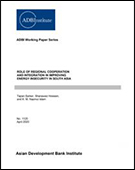 Role of Regional Cooperation and Integration in Improving Energy Insecurity in South AsiaThis working paper examines the literature on energy security in Asia. It gives an overview of resource constraints and the growth nexus in Asia, the scope for enhancing energy security, and the potential of regional cooperation to boost energy security. Wide disparity exists in energy security across the regions and between and within countries in Asia. With energy security critical to national security and access to natural resources, it is an important aspect of Asia’s long-term growth and development. This working paper puts forth that increasing regional cooperation can help improve access to energy among the energy-deficit developing countries in Asia, and benefit the region.It concludes that regional cooperation and integration promotes an interdependence network that ensures maximum use of renewable and non-renewable energy resources. This working paper also covers energy infrastructure development, investment needs, and potential sources of funding. Author: Tapan Sarker, Shanawez Hossain, K. M. Nazmul Islam Year: 2020 Download Tags: Energy Security, Energy, Renewable Energy, Trade Accelerating Regional Cooperation and Integration in Asia and the Pacific: 2017 Conference HighlightsRegional cooperation and integration (RCI) plays a critical role in accelerating economic growth, reducing poverty and economic disparity, and raising productivity and employment. This conference report looks at challenges for accelerating RCI in Asia and the Pacific, with a focus on economic corridors and emerging RCI initiatives. It underscores the importance of gateway ports to multimodal transport, such as the Port of Chittagong in Bangladesh under the South Asia Subregional Economic Cooperation (SASEC) program. The report also maintains that RCI technical secretariats, such as that for the SASEC partnership, are vital to fostering RCI across Asia and the Pacific. Author: Asian Development Bank Year: 2019 Download Tags: ADB, Economic Corridor Development, Regional Cooperation, Trade, Transport, SASEC Review of Maritime Transport 2019According to this report, total volume of global maritime trade reached an all-time high of 11 billion tons in 2018. However, growth was at 2.7%, below previous averages. In South Asia, the 10 most connected ports are in Sri Lanka, India, and Pakistan. Among which, the most connected port is Colombo in Sri Lanka, which serves as a transshipment hub for the region. The Mundra port in India saw the largest increase in the liner shipping connectivity index. Chittagong in Bangladesh is the world’s 14th most connected port, while Male in Maldives is 18th. Author: United Nations Conference on Trade and Development Year: 2019 Download Tags: South Asia, Sri Lanka, Ports, Trade 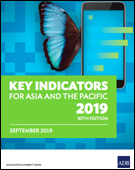 Key Indicators for Asia and the Pacific 2019This report presents the latest economic, financial, social, and environmental statistics, and includes sustainable development goals indicators, for the 49 regional members of the Asian Development Bank (ADB). Remittances have been a stable source of revenue for Asia and the Pacific, with India being the top recipient of remittances globally at $78.6 billion in 2018. In 2017, foreign direct investment (FDI) in the region rose to $541.9 billion, although FDI flows have been more volatile compared to remittance flows. This report uses domestic value-added via forward linkages (DVA_F) to discuss the evolution of global value chains in Asia. In 2018, almost a third of the DVA_F generated in Asia stayed within the region, representing 39.0% of the total domestic value-added sent to the region. It shows the importance of intraregional trade for Asia, as Asia's trade connection to North America is weakening. Author: Asian Development Bank Year: 2019 Download Tags: ADB, India, South Asia, Sustainable Development Goals, Trade International Rules and e-Commerce: Trade Insight, Vol. 15 No. 1–2, 2019Trade Insight is published by the South Asia Watch on Trade, Economics and Environment. This issue includes discussions on various aspects of e-commerce, such as cryptocurrencies, integration of small and medium enterprises, and competition and regulation. Its editorial argues that South Asia should take an active part in drafting global rules on e-commerce. The issue also includes features on the South Asian Association for Regional Cooperation investment agreement, Connectivity 2.0 for the South Asia Economic Union, the use of inland waterways, and the electronic cargo tracking system. Author: South Asia Watch on Trade, Economics and Environment Year: 2019 Download Tags: Electronic Cargo Tracking System, SAARC, Trade, Transport Bridging the East: Trade and Transport Connectivity in the Bay of Bengal RegionBangladesh, Bhutan, India, and Nepal Motor Vehicles Agreement aims to reap the trade and economic potentials of the countries of South Asia. This study identifies hurdles to the successful implementation of the agreement through evidence-based advocacy and dialogue. The study highlights issues related to infrastructure, political economy, gender, and livelihood. Author: CUTS International Year: 2019 Download Tags: Trade, Transport, BBIN, BBIN Motor Vehicles Agreement, Bangladesh, India, Bhutan, Myanmar, Nepal Services for Trade Competitiveness: Country and Regional Assessments of Services TradeThis book applies methodologies for assessing competitiveness of countries’ services sector. It examines the types of barriers to services in the regulatory environment and identifies the policy implications. It aims to guide policymakers in the area of services in international trade. The chapter on diversifying Nepal’s economy assesses the country’s trade potential in services. Using the Services Trade Competitiveness Diagnostic toolkit, it identifies policy measures that can help Nepal identify strategies for greater integration in the global marketplace. Author: Claire Hollweg and Sebastian Saez, eds. Year: 2019 Download Tags: Energy, Nepal, Services, Trade, WB ASYCUDA Programme: Compendium of Case Studies 2019Through customs automation and reform projects, the Automated System for Customs Data (ASYCUDA) Programme contributes to the achievement of the Sustainable Development Goals and production of trade-related statistics. This compendium includes details of achievements and benefits reported by countries—including Bangladesh and Sri Lanka—after implementing ASYCUDA systems. The information suggests ASYCUDA is not just a technical assistance program but also a development program. Author: United Nations Conference on Trade and Development Year: 2019 Download Tags: Sustainable Development Goals, Bangladesh, Sri Lanka, Trade Global Economic Prospects, June 2019South Asia enjoyed solid economic activity in 2018 with gross domestic product (GDP) growth at 7% owing to strong domestic demand. Risks to the outlook include possible re-escalation of political uncertainties, financial sector weaknesses due to nonperforming assets, and fiscal challenges amid elections in several countries. Author: World Bank Group Year: 2019 Download Tags: WB, South Asia, Trade Basic Statistics 2019Basic Statistics presents select economic, environmental, and social indicators used to track progress toward the Sustainable Development Goals. It includes indicators for development indicators for 46 economies in the Asia and Pacific region, including those for the seven SASEC countries: Bangladesh, Bhutan, India, Maldives, Myanmar, Nepal, and Sri Lanka. Author: Asian Development Bank Year: 2019 Download Tags: Bangladesh, Bhutan, India, Maldives, Myanmar, Nepal, Sri Lanka, Trade, Sustainable Development Goals, Energy Economic and Social Survey of Asia and the Pacific 2019: Ambitions beyond GrowthThe Asia-Pacific region needs an estimated $1.5 trillion per year to end poverty and hunger, provide basic health care, quality education, enabling infrastructure, and clean energy for all, and for climate action and living in harmony with nature. Available public and private resources make these ambitions affordable for most countries in the region. However, development partnerships and regional cooperation are needed for all countries to achieve these “ambitions beyond growth.” Author: United Nations Economic and Social Commission for Asia and the Pacific Year: 2019 Download Tags: Sustainable Development Goals, Bangladesh, Bhutan, India, Nepal, Maldives, Myanmar, Sri Lanka, Trade, Energy Exports to Jobs: Boosting the Gains from Trade in South Asia South Asia’s economy has grown while significantly reducing poverty. Yet concerns persist regarding growing joblessness and poor job quality. This report shows how increasing exports per worker could result in higher wages for skilled workers, while less-skilled and rural workers could benefit from new jobs. To spread benefits from higher exports, policies are needed to raise skills and get women and youth into better jobs. Author: Erhan Artuc, Gladys Lopez-Acevedo, Raymond Robertson, and Daniel Samaan Year: 2019 Download Tags: South Asia, Jobs, Trade 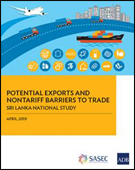 Potential Exports and Nontariff Barriers to Trade: Sri Lanka National StudyHow can Sri Lanka address nontariff barriers (NTBs) that hinder growth of its trade with Bangladesh, Bhutan, India, Maldives, and Nepal? The study examined the impact of sanitary and phytosanitary (SPS) and technical barriers to trade (TBT)-related nontariff measures enforced by SASEC countries to Sri Lanka’s exports with maximum potential, conducted a national diagnostic audit of the SPS and TBT infrastructure, and identified current SPS and TBT infrastructure capacity constraints. It considered options and opportunities to deal with the identified NTBs, including recommendations to improve Sri Lanka’s SPS–TBT infrastructure, and enhancing efficiency of SPS–TBT-related processes. Findings of the study could help formulate policies, laws, and institutions to address SPS–TBT-related NTBs and promote intraregional trade, as well as provide considerations for bilateral Free Trade Agreement negotiations. Additionally, the study provides traders with a comprehensive coverage of available export opportunities in Sri Lanka, and barriers they could encounter. Author: Asian Development Bank Year: 2019 Download Tags: Sri Lanka, Trade, Sanitary and Phytosanitary Measures, Technical Barriers to Trade, Non-Tariff Measures, ADB RCI 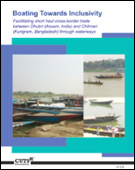 Boating Towards Inclusivity: Facilitating Short Haul Cross-border Trade between Dhubri (Assam, India) and Chilmari (Kurigram, Bangladesh) through WaterwaysIndia and Bangladesh use inland waterways to trade goods, mainly through three routes. The most active route is a portion of Protocol Route 1 between Kolkata, India, and Narayanganj, Bangladesh. This paper by Consumer Unity and Trust Society (CUTS) International explores how cross-border trade may be expanded along the stretch between Dhubri, India, and Chilmari, Bangladesh. Opening the route to small mechanized boats would offer livelihood opportunities to boat pilots, boat builders, vendors, small traders. Farmers will also have access to new markets across the border. The study highlights the need for an inclusive developmental approach that encourages cooperation in trade and connectivity and benefits marginalized communities. Author: Saurabh Kumar, Susan Mathew, and Veena Vidyadharan Year: 2018 Download Tags: Transport, India, Bangladesh, Trade, Connectivity Trade Profiles 2018This report presents key indicators on trade in goods and services, highlighting the major exports and imports for each economy as well as their main trading partners. It gives a snapshot of the importance of trade in the economy and gives information on total trade flows. The report includes trade profiles for 197 economies, including Bhutan, Maldives, Myanmar, and Nepal, and covers data on trade per capita, world ranking in exports and imports, and trade in commercial services. It also covers data on patent, trademark, and industrial design applications for each country. India ranks 8th in exports of commercial services, while Bangladesh ranks 49th in imports of merchandise. Sri Lanka ranks 69th in exports of commercial services. Author: World Trade Organization Year: 2018 Download Tags: Trade, WTO World Tariff Profiles 2018World Tariff Profiles 2018 presents comprehensive data on tariffs and non-tariff measures imposed by over 170 countries and customs territories. It provides data on tariffs imposed by these economies, in comparative tables and one-page profiles. This year's report presents a special analysis of least-developed countries’ (LDCs) use of preferential market access offered by trading partners. It highlights how LDCs benefit from preferential customs duties, and examines products eligible for preferential treatment, to show how members utilize preferential tariff schemes for LDCs and use other "competing" preferential duty arrangements. Author: World Trade Organization Year: 2018 Download Tags: LDC, Least Developed Countries, Customs, Trade Risk Management in Maldives: Sharing Practical Experience and Lessons LearnedMaldives is implementing reforms to improve risk management controls and to strengthen its trade environment. Risk management aims to determine which goods need to be examined in detail when entering a country. As government agencies improve service delivery, traders will benefit from reduced time to import and export goods, increased predictability of services, and greater ease of doing business. This report shows that improvements to risk management processes to deliver operational and economic gains in Maldives can be replicated across South Asia. Author: Asian Development Bank Year: 2018 Download Tags: Customs, Maldives, SASEC, Trade, ADB RCI The WEB of Transport Corridors in South AsiaThis book looks at how the economic benefits of investments in transport corridors could be amplified and how negative impacts could be minimized in South Asia. The book introduces an appraisal methodology that looks at the web of interconnected elements around corridors and assesses proposed corridors according to their potential to bring wider economic benefits (WEB). It uses case studies of past and recent corridor initiatives, and presents a simulation of the impact of the proposed Kolkata-Dhaka corridor. Author: Asian Development Bank, JICA, UKAID, World Bank Year: 2018 Download Tags: ADB, Economic Corridor Development, Gender, Regional Integration, Roads, Trade, Transport, WB, ADB RCI How Would Cross-Border Electricity Trade Stimulate Hydropower Development in South Asia?South Asia uses only 20% its hydropower potential, estimated at more than 350 gigawatts. This report looks at regional electricity trade and examines the potential of hydropower development and trade in the region. It studies the importance of improving cross-border transmission interconnections to promote hydropower in South Asia. It also shows that large hydropower development would provide the additional benefits of irrigation and flood control that can be shared among neighboring countries, such as Bangladesh, India, and Nepal. Author: Govinda R. Timilsina Year: 2018 Download Tags: Bangladesh, Energy, Hydropower, Nepal, Regional Cooperation, South Asia, Trade Embracing the E-commerce Revolution in Asia and the PacificAsia is the world’s largest e-commerce marketplace. In South Asia, India has the largest e-commerce market at $33 billion in 2017. Maldives, Bhutan, and Sri Lanka lead the subregion in terms of percentage of the population with access to the internet. This report introduces a framework for analyzing the quality of e-commerce development in the Asia-Pacific region and discusses lessons learned regarding e-commerce development. The framework incorporates economic factors, institutional environment, and social acceptance to assess e-commerce development and suggest the way forward. Author: Asian Development Bank, United Nations Economic and Social Commission for Asia and the Pacific Year: 2018 Download Tags: ADB, ICT, Trade, UNESCAP, Maldives, Bhutan, Sri Lanka Basic Statistics 2018Basic Statistics presents development indicators for 45 economies in the Asia and Pacific region, including those for the seven SASEC countries, Bangladesh, Bhutan, India, Maldives, Myanmar, Nepal, and Sri Lanka. It presents selected core indicators such as international and national poverty rates, inflation, and current account balance. It also presents information on indicators related to land, population, sustainable development goals, national accounts, money, balance of payments, reserves, external debt, and central government finance. Author: Asian Development Bank Year: 2018 Download Tags: Energy, ADB, Trade, Sustainable Development Goals, Bangladesh, Bhutan, India, Maldives, Myanmar, Nepal, Sri Lanka Trade Costs, Time, and Supply Chain ReliabilityTrade Costs, Time, and Supply Chain Reliability analyzes the effect of time on trade costs using shipment-level data from the Universal Postal Union. Distance and logistics performance are factors that affect transport times and uncertainty, which increase trade costs substantially. The paper suggests that by investing in improving connectivity, South Asia Subregional Economic Cooperation countries could reduce transport times and increase reliability to major markets. Author: Utsav Kumar, Ben Shepherd, and Roselle Dime Year: 2018 Download Tags: ADB, SASEC, Trade, Transport, ADB RCI Fostering Effective Energy TransitionThis report introduces the Energy Transition Index, which looks at the performance of energy systems in 114 countries and their readiness to transition to a secure, sustainable, affordable, and inclusive future energy system. The report shows that India has been improving electricity access. It also encourages countries to benchmark themselves against comparable groups in terms of development status and energy trade balance to identify best practices and develop applicable improvement plans. Author: World Economic Forum Year: 2018 Download Tags: Energy, India, Trade The Digital Transformation and the Transformation of International TradeAs new modes of trade emerge from developments in the digital economy, new regulatory concerns arise regarding privacy, ensuring tax neutrality across different modes of trade, and competition. This paper considers the different approaches to these issues by different countries and country partnerships. It studies modes of trade in the digital era, categorizes concerns identified by stakeholders and governments, and reviews how regional trade agreements are working to address these concerns. Author: Dan Ciuriak and Maria Ptashinka Year: 2018 Download Tags: Trade, WTO Global Investment Competitiveness Report 2017/2018: Foreign Investor Perspectives and Policy ImplicationsThis report provides analytical insights and empirical evidence on foreign direct investment’s (FDI) drivers and contributions to economic transformation. Data are categorized by sector and geographic origin and destination of investment, including analysis for SASEC countries using data for Bangladesh, Bhutan, India, Myanmar, Nepal, and Sri Lanka. The report explores the potential of FDI to create growth for local firms, assesses the effectiveness of fiscal incentives in attracting FDI, and gives practical recommendations to developing countries. Author: World Bank Group Year: 2018 Download Tags: Bangladesh, Bhutan, FDI, India, Nepal, Sri Lanka, Trade, WB, Myanmar Harmonizing Electricity Laws in South AsiaMany in South Asia face electricity shortages that affect their socioeconomic development. But the region has a large hydropower potential and other energy resources that may be harnessed to drive growth in the region. This report looks at legal, regulatory, technical, and commercial requirements for energy trade to advance in the region, and gives recommendations for implementing the South Asian Association for Regional Cooperation Framework Agreement on Energy Trade. Author: Asian Development Bank and the South Asian Association for Regional Cooperation in Law Year: 2017 Download Tags: Bangladesh, Bhutan, Energy, Harmonisation, India, Industrialization, Maldives, Nepal, Regional Cooperation, South Asia, Sri Lanka, Trade, ADB RCI How Strategic Are Trade Strategies? Trends for Effective DevelopmentThis paper looks at 1,454 trade strategies in the International Trade Centre’s Trade Strategy Map, the world’s largest collection of documents on trade and development. It identifies key trends in trade and development strategies from 169 countries and highlights the need to ensure coherence among domestic and multilateral strategies in the coming years. Author: International Trade Centre Year: 2017 Download Tags: Trade, South Asia Least Developed Countries Report 2017This report focuses on transformational energy access for the LDCs, where 62% of people have no access to electricity. It makes a case for trade in electricity, such as the 2014 South Asian Association for Regional Cooperation framework agreement for regional cooperation on electricity among Afghanistan, Bangladesh, Bhutan, India, Maldives, Nepal, Pakistan, and Sri Lanka. International and regional trade in electricity could help lower electricity prices, mitigate power shocks, relieve shortages, and facilitate the transition to cleaner energy. Author: United Nations Conference on Trade and Development Year: 2017 Download Tags: Bangladesh, Bhutan, Maldives, Nepal, Sri Lanka, Energy, Least Developed Countries, Trade SME Competitiveness Outlook 2017 – The Region: A Door to Global TradeThe most common form of trade for small and medium-sized enterprises (SMEs) is regional trade. This report shows that regional trade agreements deliver inclusive growth, attracting value chain activity and fostering competitiveness for small firms. It provides advice for policymakers, businesses, and trade and investment support institutions. The report also includes 50 country profiles—including those of Bangladesh, Bhutan, India, Nepal, and Sri Lanka—showing SME competitiveness and export potential by region. Author: International Trade Centre Year: 2017 Download Tags: Small and Medium Enterprise, Trade, Bangladesh, Bhutan, India, Nepal, Sri Lanka Regional Cooperation and Integration in Asia and the Pacific: Implementation of the Operational Plan for Regional Cooperation and Integration, 2016–2020─Corporate Progress Report 2017Regional cooperation and integration (RCI) is a valuable means for attaining national development goals. This report reviews ADB’s progress in implementing its Operational Plan for Regional Cooperation and Integration, 2016–2020, and identifies areas for improvement. It takes a close look at progress in connectivity, competitiveness, and regional public goods and collective action through projects such as the Nepal: SASEC Customs Reform and Modernization for Trade Facilitation Program. Author: Asian Development Bank Year: 2017 Download Tags: Nepal, Energy, Trade, Customs, Myanmar, Regional Cooperation, Regional Integration, SASEC, Trade Facilitation Asia-Pacific Trade and Investment Report 2017: Channelling Trade and Investment into Sustainable DevelopmentThis report provides analyses of trends and policy developments in trade in goods and commercial services in Asia-Pacific. It shows that merchandise trade remained subdued in 2016, with South and Southwest Asia accounting for 8% of Asia-Pacific exports and 12% of Asia-Pacific imports. Foreign direct investments inflows In South and South-West Asia decreased slightly by 4% to $66 billion in 2016. The report also argues for targeted trade and investment policies that strike a balance between economic development and social and environmental development. Author: United Nations Economic and Social Commission for Asia and the Pacific Year: 2017 Download Tags: Trade, Investment, FDI, ASEAN, India, Services, South Asia, Sri Lanka, Sustainable Development Goals, UNESCAP 2017 Handbook of StatisticsThis report presents statistics and indicators on international trade, investment, and development. It includes data on developing economies in South Asia, which in 2016 accounted for about $401 billion in merchandise exports and $529 billion in merchandise imports, $192 billion in service exports and $175 billion service imports, and 6.7% gross domestic product (GDP) growth. Author: United Nations Conference on Trade and Development Year: 2017 Download Tags: FDI, South Asia, Trade, Transport, UNCTAD 100% Electricity Generation through Renewable Energy by 2050: Assessment of Sri Lanka's Power SectorIn 2014, Sri Lanka met its target of generating at least 10% of renewable energy (RE) in its electricity mix in. The following year, the share of large hydro and RE further increased, while the country’s use of fossil fuels in the electricity mix decreased. This report aims to help design mechanisms that would allow Sri Lanka to reach its goal of 100% RE in electricity generation by 2050. It looks at financial interventions needed for Sri Lanka to achieve its goal while examining technical and economic challenges the country will face in reaching its goal. This report is a co-publication of the Asian Development Bank and the United Nations Development Programme. Author: Manpreet Singh et al Year: 2017 Download Tags: ADB, Cooperation, Hydropower, Sri Lanka, Renewable Energy, Trade Trade Profiles 2017Trade Profiles 2017 provides a series of key indicators on trade in goods and services for 196 economies, highlighting major exports and imports for each economy as well as their main trading partners. It provides a concise overview of global trade for each profile, showing detailed information about merchandise trade flows. It also features an expanded section on trade in commercial services and statistics on intellectual property. Author: World Trade Organization Year: 2017 Download Tags: GDP, Trade, WTO Trans-Pacific Partnership Rules for Digital Trade in AsiaDigital trade has driven economic development by improving productivity and lowering the costs of trade in goods. The Trans-Pacific Partnership (TPP) is the first trade agreement to recognize the importance of digital trade and e-commerce, introducing new provisions that go beyond existing agreements. This paper asks why Australia, Brunei Darussalam, Japan, Malaysia, New Zealand, Singapore, and Viet Nam agreed to follow a similar set of policies for digital trade. Author: Debora Elms and Minh Hue Nguyen Year: 2017 Download Tags: Trade, Asia-Pacific Aid for Trade in Asia and the Pacific: Promoting Connectivity for Inclusive DevelopmentAid for Trade (AfT) is essential to promoting growth and tradability of services, and is a major catalyst for inclusive economic and structural information. This report looks at how trade performance in Asia and the Pacific is evolving, and highlights emerging trends in AfT. The report looks at cooperation projects in the energy sector, and shows how South Asia Subregional Economic Cooperation (SASEC) projects fund cross-border electricity transmission, power trade, energy efficiency, capacity building, and renewable sources of energy. The report also examines the impact of AfT on trade in services and the rise of e-commerce. Author: Asian Development Bank Year: 2017 Download Tags: Trade, Energy, SASEC, Aid for Trade, ADB World Trade Report 2017: Trade, Technology, and JobsEconomic growth over the last 25 years has been accompanied by unprecedented economic change. Over the past two decades, many countries have experienced significant transformations in the sectoral and occupational structure of employment. This report examines how technology and trade affect employment and wages and analyzes the challenges for workers and firms in adjusting to changes in labor markets. It looks at how governments could increase the positive impact of open trade and technological trade in South Asia and around the world. Author: World Trade Organization Year: 2017 Download Tags: Trade, ICT, Employment, Global Value Chains, South Asia Myanmar’s Integration with the WorldMyanmar only recently began participating in global trade and investment. It has large untapped potential for trade and investment in agriculture and forest-based industries, and services, such as tourism and information technology. This book examines Myanmar’s access to the global market and examines the implication of Myanmar’s democratic transition, the progress of Myanmar’s industry and infrastructure, its international linkages, and options for increased integration in regional economic groups. The book also analyzes how Myanmar could exploit global value chains. Author: Prabir De and Ajitava Raychaudhuri, editors Year: 2017 Download Tags: Agriculture, Global Value Chains, Infrastructure, Investment, ICT, Myanmar, Regional Integration, Trade Regional Road Map for Implementing the 2030 Agenda for Sustainable Development in Asia and the PacificIn 2015, 150 countries set in motion the most ambitious development agenda of our time, the 2030 Agenda for Sustainable Development. Asian countries have begun translating this agenda into action through national plans and programs. However, to fully achieve the Sustainable Development Goals, countries need to examine opportunities for regional cooperation to complement the effectiveness of national mechanisms in the areas of finance, technology, capacity-building, and trade. Discussion through regional and subregional organizations can help facilitate cooperation in these key areas. Author: United Nations Economic and Social Commission for Asia and the Pacific Year: 2017 Download Tags: Regional Cooperation, SAARC, Sustainable Development Goals, Trade, UNESCAP 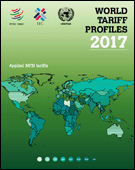 World Tariff Profiles 2017World Tariff Profiles is a joint publication of the World Trade Organization (WTO), International Trade Centre, and the United Nations Conference on Trade and Development devoted to information on market access for goods. It contains comprehensive data on tariffs and non-tariff measures imposed by over 170 countries and Customs territories. This year’s edition takes a close look at export diversification, analyzing to what extent economies have diversified their exports over time. Many countries make it a policy to diversify exports to obtain bigger market shares. An overview of export diversification shows how India, Myanmar, Sri Lanka, Bangladesh, and Bhutan have grown in the last two decades. Bangladesh in particular has achieved significant increase in terms of both product coverage and market reach. Author: World Trade Organization, International Trade Centre, and the United Nations Conference on Trade and Development Year: 2017 Download Tags: Bangladesh, Bhutan, Export, India, Maldives, Myanmar, Nepal, Sri Lanka, Tariffs, Trade, UNCTAD, WTO SARSO News: Vol. 31, No. 2The South Asian Regional Standards Organization (SARSO) newsletter features updates on SARSO events and activities. This issue features the publication of three South Asian Association for Regional Cooperation standards on food quality and safety, and the workshop on the importance of ISO 14001—which aims to help organizations improve environmental performance through the efficient use of resources and reduction of waste—and its impact on the environment and trade. It also has reports on Workshop on Conformity Standards held in New Delhi, India, and the Enhancing Capacity for Sanitary and Phytosanitary (SPS) Measures for Safe Trade in Animal and Animal Products in South Asia held in Kathmandu, Nepal. Author: South Asian Regional Standards Organization Year: 2017 Download Tags: Agriculture, Bangladesh, Bhutan, India, Nepal, SAARC, SARSO, South Asia, Standardization, Trade 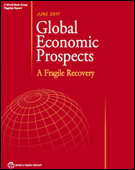 June 2017 Global Economic Prospects: A Fragile RecoveryThe World Bank forecasts that global growth will strengthen to 2.7% in 2017 amid a pickup in manufacturing and trade, rising confidence, favorable global financing conditions, and stabilizing commodity prices. In South Asia, growth is projected to remain strong at 6.8% in 2017. India is recovering from the temporary adverse effects of the end-2016 withdrawal of large-denomination currency notes. Activity in Bangladesh is moderating, reflecting a pullback in domestic demand and industrial production. Regional growth is expected to steady in 2018-2019, reaching an average of 7.2%, supported by strong domestic demand, a small rise in exports, and strong foreign direct investment. The regional outlook has been slightly revised down from January, reflecting a more protracted recovery in private investment in India than previously expected. Author: World Bank Group Year: 2017 Download Tags: WB, Bangladesh, FDI, India, Manufacturing, South Asia, Trade 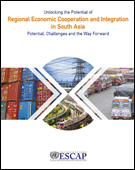 Unlocking the Potential of Regional Economic Cooperation and Integration in South AsiaAt a modest 6% of total trade, intraregional trade in South Asia stands at less than one third of its full potential. Trade barriers and inadequate infrastructure have cost South Asia over US $54 billion per year in lost export opportunities. With 309 million people living on less than $1.90 a day—the largest concentration of poverty in the world—South Asia should urgently pursue broad-based regional economic cooperation that could enable effective responses to the subregion’s developmental challenges. This report examines the state of economic integration in South Asia and identifies potential areas for further strengthening subregional linkages. It provides recommendations on policy actions to increase market integration, improve connectivity, boost investment in infrastructure development, and tackle shared vulnerabilities and risks. It calls for the consolidation and upgrading of existing trade and investment cooperation initiatives into a South Asia Comprehensive Economic Partnership. Author: United Nations Economic and Social Commission for Asia and the Pacific Year: 2017 Download Tags: BIMSTEC, Investment, Regional Cooperation, SAARC, South Asia, Sustainability, Sustainable Development, Trade, UNESCAP, Bangladesh, Bhutan, India, Maldives, Myanmar, Nepal, Sri Lanka Can Online Markets Make Trade More Inclusive? Technology-driven online trade reduces income inequality and makes trade more inclusive. To fully realize these new gains from trade, governments and export promotion agencies should address barriers to e-commerce. Technology made available by online markets has significantly reduced the cost of entry into international markets for small and medium-sized firms, which can now reach more distant consumers and create a global reputation as a seller at very low costs. Online firms, even those smaller than traditional offline firms, export, and this paper shows that online markets help reduce income inequality by providing smaller firms access to international markets. Author: Andreas Lendle and Marcelo Olarreaga Year: 2017 Download Tags: ADB, ICT, India, Trade Climbing Higher: toward a Middle-income NepalNepal is experiencing modest growth but brisk poverty reduction. It has halved the poverty rate in just seven years and witnessed an equally significant decline in income inequality. Yet Nepal remains one of the poorest and slowest-growing economies in Asia, with per capita income falling behind its regional neighbors. The report discusses the need for comprehensive policy reform to address the country’s challenges in becoming a lower-middle-income country by 2030. The report outlines suggested reforms to facilitate greater investment and improved productivity, build new sources of growth, and deepen human capital. Author: World Bank Group Year: 2017 Download Tags: Employment, Investment, Nepal, Poverty Reduction, Trade, Transport, WB 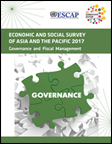 Economic and Social Survey of Asia and the Pacific 2017The 2017 edition of UNESCAP’s Economic and Social Survey of Asia and the Pacific underscores the need to better address the region's pressing challenges due to rising trade protectionism, heightened global uncertainty, and rapid growth in the previous years. Better governance and effective institutions can help Asia and the Pacific countries cope with steady but modest growth and rising inequalities, as well as environmental degradation, by helping them gain access to a skilled labor force, improve investment prospects, and sustain innovation—enhancing their level and pace of productivity, improving their long-term economic prospects. In South Asia, where most households depend entirely on labor income, decent and high-productivity jobs are needed to help mitigate high levels of poverty. The report also highlights the need to manage climate change, which threatens to undermine the region's economic development gains. Author: United Nations Economic and Social Commission for Asia and the Pacific Year: 2017 Download Tags: UNESCAP, South Asia, Trade 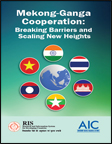 Mekong-Ganga Cooperation: Breaking Barriers and Scaling New HeightsThe Mekong-Ganga Cooperation (MGC) promotes intra-regional collaboration among Cambodia, India, Lao PDR, Myanmar, Thailand and Vietnam in the areas of trade, tourism, culture, education, and transport and communications. This book reviews how MGC cooperation has grown since MGC's inception in 2000, including expansion of their economic and cultural relations. Under India's Act East Policy, MGC has gained further momentum – endorsing a Plan of Action 2016-2018, and planning extended connectivity of the India-Myanmar-Thailand Trilateral Highway to Cambodia, Laos, and Vietnam. This report outlines important discussion points on trade, regional value chains, foreign direct investment, physical and digital connectivity, border connectivity, and cultural relations, to strengthen India and the Association of Southeast Asian Nation linkages through MGC. Author: Research and Information System for Developing Countries and ASEAN-India Centre Year: 2017 Download Tags: ASEAN, India, Southeast Asia, South Asia, Trade, Trade Facilitation Global Energy InterconnectionSustainable energy and climate change are major global concerns, yet three billion people around the world rely on wood, coal, or animal waste for cooking and heating. The interconnection of grids would open up opportunities for resource sharing and bring clean energy to much more of the world. This paper assesses benefits and outlines policy, technical, and economic preconditions for global energy interconnection. It analyzes global transmission scenarios and evaluates their impact on energy supplies and the environment. It also gives recommendations for setting standards, and where stakeholder involvement is necessary. Author: International Electrotechnical Commission Year: 2017 Download Tags: Energy, India, Nepal, Policy, Standardization, Sustainability, Trade, South Asia Implications of Brexit to the Asia-Pacific Region: with a Focus on Least Developed Countries (Trade Insights: Issue No. 20)This issue of Trade Insights, published by United Nations Economic and Social Commission for Asia and the Pacific, discusses how possible Brexit scenarios could adversely affect least developed countries in the Asia-Pacific region. Simulation results show that potential reduction in exports to the United Kingdom for fish, clothes, textiles, footwear, and other key items can range from 16% to 50% of their current export value. According to the study, countries heavily exposed to Brexit-induced risks must analyze the extent of such impact and engage the United Kingdom in discussions in order to limit negative impact. Author: Louis Graham, Arun Jacob, and Anders K. Møller Year: 2017 Download Tags: Asia-Pacific, Least Developed Countries, South Asia, Trade, UNESCAP, India, Bangladesh, Maldives, Myanmar, Nepal, Sri Lanka 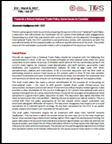 Trade Intelligence for the Private Sector Vol 17 – Towards a Robust National Trade PolicyThis paper provides an overview of the Ceylon Chamber of Commerce's (CCC) comments on the draft national trade policy for Sri Lanka prepared by Sri Lanka's Ministry of Development Strategies and International Trade. CCC's review focuses on ten key issues—trade liberalization; multilateral trading agreements, global value chains, global production networks; revenue considerations; innovation and technology upgrades; institutional reforms; regulatory reforms; government support for the private sector; rise of protectionism; digital trade and e-commerce; and future of existing bilateral and regional agreements. The Chamber puts forward that alongside a refocusing of Sri Lanka's trade policies toward international trade, new trade policy should tackle issues that arose from the current framework and be aligned with policies and institutions. It highlights the need for a forward thinking national trade policy that will improve Sri Lanka's competitiveness, and encompass interests of today's private sector as well as tomorrow's businesses and entrepreneurs. Author: CCC Economic Intelligence Unit Year: 2017 Download Tags: Sri Lanka, Economic Growth, Trade Facilitate Trade for Development: Aid for Trade The Aid for Trade program has been providing support to developing economies in tackling obstacles to growth through better facilitation of trade in the last 10 years. Since its launch in 2006, a total of $308 billion has been disbursed to finance aid-for-trade programs and projects, which are working to reduce trade and transport costs, promote trade expansion, and achieve economic and social objectives. As high trade costs persist in keeping developing countries from fully exploiting their trade and development potential, the Aid for Trade program remains highly relevant, and will help developing economies, including landlocked and small and vulnerable economies, achieve the 2030 Agenda for Sustainable Development. Author: William Hynes and Frans Lammersen Year: 2017 Download Tags: Trade, Development, Aid for Trade, Trade Facilitation, Transport, Bangladesh, Bhutan, Myanmar, Nepal, Least Developed Countries 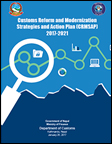 Customs Reform and Modernization Strategies and Action Plan 2017-2021The Customs Reform and Modernization Strategies and Action Plan 2017-2021 of the Nepal Department of Customs (DOC) aims to serve as a blueprint of Customs reform for the next four years, with a vision to support Nepal's initiatives toward economic and social prosperity. With Nepal seeing continuous increase of cross-border trade over the last decades, this Plan is being implemented to align Nepal toward international standards. It outlines the DOC's vision, mission, guiding principles, as well as strategies, such as expediting legitimate trade facilitation and enhancing Customs automation and data management, to create a conducive environment for seamless movement of cargo traffic to and from the borders, and help in lowering transaction costs through greater transport facilitation. Author: Nepal Department of Customs Year: 2017 Download Tags: Customs, Customs Valuation, Nepal, Trade Facilitation, Import, Export, Trade, Revised Kyoto Convention 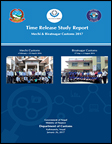 Time Release Study: Mechi and Biratnagar Customs 2017Time Release Study is a special tool developed by the World Customs Organization to measure effectiveness of operational procedures carried out by Customs, other regulatory agencies and private sector stakeholders in the standard processing of imports, exports, cross border and transit movements. A key activity identified in Nepal's Customs Reform and Modernization Strategies and Action Plan 2013-2017, it identifies the average time taken for clearance of consignments from entry to exit in the Customs area, enabling possible corrective measures to
improve performance. This Study was undertaken to support trade facilitation measures being introduced by the Nepal Department of Customs to reduce bottlenecks to faster Customs clearance, and promote seamless movement of cargo traffic to and from the Country. Author: Nepal Department of Customs TRS Working Group Year: 2017 Download Tags: Trade Facilitation, Time Release Study, Import, Export, Trade, Nepal, WCO Time, Uncertainty, and Trade FlowsThis paper assesses the impact of international transit time and time-related uncertainty on bilateral trade, including their impact on trade costs. It concludes that international transit time matters primarily for South-South trade, while uncertainty is more important for North-North trade. Both factors are confirmed to be statistically and economically significant determinants of bilateral trade, including global value chains, and strengthens the ground on the emerging policy emphasis to address the overall costs faced by supply chain operators, including costs linked to uncertainty. Author: Jose Anson, Jean-Francois Arvis, Mauro Boffa, Matthias Helble, and Benjamin Shepherd Year: 2017 Download Tags: Trade, Trade Facilitation, Transport, South-South Trade Accumulating Trade Costs and Competitiveness in Global Value ChainsThis paper examines the implications of trade costs, including applied tariffs, transportation and insurance costs, on competitiveness at industry, national and global levels, and identifies where trade facilitation investment would have the highest social returns from the perspective of global value chains (GVCs). With trade costs amplified along GVCs, profitability of individual business operations are affected by incurred transaction expenses. The authors conclude that direct benefits of trade facilitation will be higher for countries that are not yet well integrated into international trade, but key traders who are at the core of GVCs also stand to gain much. Author: Antonia Diakantoni, Hubert Escaith, Michael Roberts and Thomas Verbeet Year: 2017 Download Tags: Trade, Tariff, Transport, Trade Facilitation, Global Value Chains South Asia’s Turn: Policies to Boost Competitiveness and Create the Next Export PowerhouseWill South Asia become the next global factory? By 2030 more than a quarter of the world’s working adults will live in South Asia. As the work force ages and labor costs rise in China and other East Asian countries, many eyes turn to South Asia. According to this report, to realize the region’s potential, countries in South Asia should increase regional and global integration, take advantage of agglomeration economies, strengthen firm capabilities, and improve the business environment. Author: Gladys Lopez‐Acevedo, Denis Medvedev, and Vincent Palmade Year: 2017 Download Tags: Bangladesh, India, Regional Integration, South Asia, Trade, WB Study for Development of a Potential Hydropower Plant in South AsiaRapid development in South Asia has produced a huge surge in energy demand. Nepal, with more than 83,000 megawatts of potential hydropower supply, can significantly increase the South Asian Association for Regional Cooperation (SAARC) region's energy security. This study highlights ongoing hydropower projects in Nepal, in particular, the Sunkoshi 2 Storage Project, which has the potential to become a regional hydropower plant in South Asia. It also emphasizes the need to expand the region's power transmission infrastructure to promote power trade, and updating of policies that govern cross-border electricity trade among countries in the region. Author: SAARC Energy Centre Year: 2016 Download Tags: Hydropower, Energy, Nepal, SAARC, Trade BIMSTEC: The Road AheadThis report examines how the Bengal Initiative for Multi-Sectoral Technical and Economic Cooperation (BIMSTEC) region can utilize its intraregional network to deepen regional cooperation and integration to better the lives of the roughly 1.5 million people living in this region. It discusses issues of trade, investment, regional value chains, and connectivity, in the context of making the BIMSTEC grouping more relevant and meaningful. With BIMSTEC's enormous potential waiting to be tapped, this report urges the grouping to take advantage of newly available opportunities and harvest low
hanging fruits, including establishment of a BIMSTEC power trade network,
promotion of business-to-business and people-to-people contact, enhancement of
regional value chains, and engaging the experience and expertise of BRICS
economies. Author: Research and Information System Year: 2016 Download Tags: BIMSTEC, Regional Cooperation, Thailand, Trade, Energy Trade Facilitation and Global Value Chains: Opportunities for Sustainable DevelopmentThis paper analyzes the relationship between global value chains (GVCs) and trade facilitation, and its contribution to sustainable development outcomes on low-income and least developed countries (LICs and LDCs). A key insight of the paper concludes that it is not fundamentally GVCs that drive the sustainable development implications of improved trade facilitation, but the resulting extension and intensification of economic activity. It underlines the importance of putting in place domestic regulatory infrastructure that considers the appropriate economic, social, and environmental dimensions to ensure that GVCs remain consistent with the global commitment to sustainable development, while expanding economic opportunities of LICs and LDCs. Author: Ben Shepherd Year: 2016 Download Tags: Trade Facilitation, Trade, Global Value Chains, Sustainability, Sustainable Development, Least Developed Countries, LDC 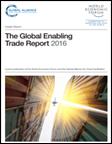 Global Enabling Trade Report 2016The Global Enabling Trade Report has been created to provide insight into trade policy and practice. It includes the Enabling Trade Index (ETI), which assesses the extent to which economies have in place institutions, policies, infrastructures and services facilitating the free flow of goods over borders and to their destination. This edition highlights that while an increasingly globalized trading system has been lifting millions out of poverty, trade barriers and costs are still preventing millions of people around the world from engaging in international trade. It reports that all South Asian economies have improved their ETI score over the past two years, with Bhutan as the most improved country in the region, jumping 12 places to 92, followed by India at 102, Sri Lanka at 103, Nepal at 108, Pakistan at 122, and Bangladesh at 123, yet the region remains the most closed worldwide. While South Asia has improved its access to foreign markets and adoption of ICTs, it needs to improve access to its domestic market – on average, South Asian countries impose a tariff of 16.7% on imported products – and enhance its transport infrastructure, particularly in Bhutan and Nepal. Author: Global Alliance for Trade Facilitation and the World Economic Forum Year: 2016 Download Tags: Trade, Trade Facilitation, Transport, Trade Policy, World Economic Forum, Bangladesh, Bhutan, India, Sri Lanka, Pakistan Research Handbook on Trade in ServicesThis Research Handbook explores the latest developments in services trade by drawing on insights from experts with a range of perspectives, including empirical economics, law and global political economy. The book further chronicles the rising stakes and involvement of developing countries in global services trade, notably their growing insertion in global value chains, as well as the latest advances and remaining challenges in the statistical measurement of trade in services. Author: Pierre Sauvé and Martin Roy, editors Year: 2016 Download Tags: Services, Trade, Economics, Trade Facilitation, Trade Policy Economic Benefits from Nepal-India Electricity TradeThis report confirms Nepal and India's viable electricity export potential, and highlights how facilitating cross-border trade of electricity will benefit both countries. In Nepal, substantial economic gains can boost the economy and improve the well-being of its people—in 2045 under the accelerated power trade scenario, electricity trade revenue can bring in up to $9.8 billion. In India, gains from cross-border trade centers on lower electricity system cost—hydropower imports from Nepal will allow India to forgo some investment needed to meet its capacity demand. Furthermore, hydropower will complement India's solar and wind power generation, offering an affordable and convenient renewable resource to meet its evening peak demand. Author: South Asia Regional Initiative for Energy Integration Year: 2016 Download Tags: Energy, Trade, India, Nepal, Hydropower Capital Market Integration in South AsiaThis book discusses the potential capital market products and activities within South Asia that stakeholders in the region could explore to help the South Asian Association for Regional Cooperation (SAARC) region further realize its potential. Conventional investment, such as funds, global depository receipts, as well as promising opportunities that factor the region's demographics and socioeonomics are considered in this book, with arguments aimed toward investors and institutions. The book demonstrates both retail and institutional investor interest in this combined high-growth region by offering scope for yield, diversification and risk mitigation, maximized upside from multiple growth markets, minimized downside through low-correlation constituents, and makes the case why now is an opportune time to look at SAARC. Author: Sourajit Aiyer Year: 2016 Download Tags: Investment, SAARC, Trade, Economic Corridor Competitiveness of South Asia’s Container Ports: A Comprehensive Assessment of Performance, Drivers, and CostsAs a result of inefficiencies in South Asia’s container ports, the average cost of exporting or importing a container in the region is more than double that in East Asia. Better port logistics could help increase trade, diversify exports, attract more foreign direct investment, and spur economic growth. As container traffic continues to grow in South Asia, the best way to improve port performance is by increasing productivity. This report examines the performance of the 14 largest container ports in the region, identifying key drivers of port performance and examining differences in performance across ports. Author: Matías Herrera Dappe and Ancor Suárez-Alemán Year: 2016 Download Tags: Customs, Economic Growth, FDI, Infrastructure, Investment, South Asia, Trade, WB SME Competitiveness Outlook: Meeting the Standard for TradeStandards and regulations for goods and services are important to international trade and value chains. They ensure consumer protection, determine compatibility, and promote environmental sustainability. This SME Competitiveness Outlook focuses on helping small and medium-sized enterprises (SME) make the most of standards and regulations to increase their competitiveness. Findings include strategies for SME managers on selecting and implementing standards and regulations, and an action plan for policymakers and trade and investment support institutions involved in aiding SMEs compete in markets where standards and regulations matter. Author: International Trade Centre Year: 2016 Download Tags: Trade, Small and Medium Enterprises, Bangladesh, India, Nepal, Sri Lanka, WTO, Global Value Chains World Trade Report: Levelling the Trading Field for SMEsParticipation in international trade, once exclusive, can progressively become more inclusive. But while new opportunities are opening up for small to medium-sized enterprises (SMEs), old barriers to international trade remain. This report highlights national and international policy actions that would enhance the ability of SMEs to participate in world markets more effectively. It says that for open trade and global integration to fully benefit everyone, it is crucial to ensure that all firms—not just large corporations—can succeed in today’s global marketplace. Author: World Trade Organization Year: 2016 Download Tags: Trade, WTO, Small and Medium Enterprise, Global Value Chains 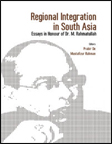 Regional Integration in South Asia: Essays in Honour of Dr. M. RahmatullahBuilding efficient transport linkages within and across countries in South Asia is crucial to development of production networks and value chains, and promotion of trade and investment. This collection of essays honors Dr. M. Rahmatullah, who championed the cause of multimodal connectivity in South Asia for seamless movement of goods across Asia, and dreamt of building an integrated South Asia through corridors and gateways to be connected with pan-Asian transport networks. A valuable resource for policymakers, academics, and practitioners working on issues of South Asian regional integration, this book looks at progress made on facilitating trade and enhancing connectivity in the region, assesses policy priorities, implementation imperatives, and emerging challenges to South Asian trade and integration, and gives recommendations on further strengthening South Asian integration. Author: Prabir De and Mustafizur Rahmant Year: 2016 Download Tags: Transport, Trade, Trade Facilitation, Connectivity, South Asia, South Asian Economic Union Trade, Testing and Toasters: Conformity Assessment Procedures and the TBT CommitteeDuplication, delays or discrimination in Conformity Assessment Procedures (CAPs) can significantly increase trade costs: this risk is reflected in the growing importance of CAPs in World Trade Organization (WTO) discussions, and bilateral and regional free trade agreements. The paper uses new data on government-to-government discussions of CAPs in the WTO Committee on Technical Barriers to Trade (TBT) and studies trade issues that WTO members encounter with CAPs, based on specific trade concerns raised during 2010-2014. Author: Devin McDaniels and Marianna Karttunen Year: 2016 Download Tags: Technical Barriers to Trade, WTO, Trade Reducing Trade Costs in LDCs: The Role of Aid for TradeThis report analyzes the role of Aid for Trade in reducing trade costs in least developed countries (LDCs), where trade costs are high and constitute a major impediment to the countries' participation in international trade. The most important sources of trade costs in LDCs are inadequate transport infrastructure, cumbersome border procedures, and compliance with non-tariff measures for merchandise exports. The study covers countries from around the world, including trade facilitation and trade restrictions in Nepal, Bhutan, India, and other Asian countries. Author: Rainer Lanz, Michael Roberts, Sainabou Taal Year: 2016 Download Tags: Trade, Trade Facilitation 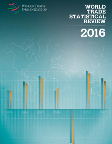 World Trade Statistical Review 2016The World Trade Statistical Review is the World Trade Organization's latest flagship publication offering a detailed analysis of the latest developments on global trade in goods and services—including developments in trade policy and participation of developing economies and least developed countries—examined through analytical chapters, complemented by over 50 tables. The publication reports that in 2015, developing Asia represented 67% of developing economies’ exports. In merchandise trade, India ranked 9th among the world's top exporter of agricultural products, and continues to be one of the top 3 textile exporters, which accounts for nearly 2/3s of world exports. A 25% decline in LDC exports was reported, due to the negative impact of the drop in fuel prices and mining products. LDC participation in global exports of commercial services also remained negligible at 0.8%. In trade policy making, the publication reported that WTO members introduced 132 measures to facilitate trade, yet applied 154 new trade-restrictive measures during the period between mid-October 2015 and mid-May 2016. Author: World Trade Organization Year: 2016 Download Tags: Trade, Export, India, Least Developed Countries Facilitating Trade between India and Sri LankaIndia and Sri Lanka have duty-free access to each other’s markets through the India-Sri Lanka Free Trade Agreement. Yet in recent years, traders from both countries have rarely utilized the agreement. This study aims to identify ways to improve importing and exporting under the agreement. It examines key issues and how to address them through the education of traders and Customs officials on goods eligible for concessions, facilitating testing and certification, streamlining Customs procedures, and establishing help desks. The study also offers recommendations in the areas of trade facilitation that may be incorporated in future negotiated agreements. Author: Suwendrani Jayaratne and Janaka Wijayasiri Year: 2016 Download Tags: Sri Lanka, India, Exports, Trade, Customs 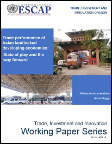 Trade Performance of Asian Landlocked Developing Economies: State of Play and the Way ForwardMany landlocked countries remain among the world's poorest nations, despite huge political, economic and technological gains over the last two centuries. Their lack of access to coast and sea ports burden them with higher trade costs, constraining their socio-economic development prospects. This paper examines the trade performance of Asian land-locked developing countries (LLDCs), including their export performance and export diversification, and attempts to identify factors affecting their performance, such as cost of trade and trade facilitation measures, which inhibit their integration into global and regional economies. Among LLDCs in South Asia, Bhutan incurs some of the highest trade costs and Nepal faces high cost in transport services. The paper finds persistent challenges to the growth of Asian LLDCs--trade barriers and trade restrictions, lack of infrastructure and poor trade facilitation performance-- and recommends reforms that could mitigate these continuing economic challenges. Author: Witada Anukoonwattaka and Aman Saggu Year: 2016 Download Tags: Landlocked Developing Countries, Exports, Trade, UNESCAP 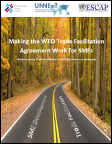 Making the WTO Trade Facilitation Agreement Work for SMEsSmall and Medium Enterprises (SMEs) comprise 95% of enterprises worldwide and provides at least two thirds of private sector employment. However, when it comes to international trade, SMEs experience limited capacity in dealing with the complex administrative and regulatory procedures associated with moving and selling goods across borders. This book fills a gap by providing a reference for articles of the World Trade Organization (WTO) Trade Facilitation Agreement (TFA) that are particularly beneficial to SMEs, and identifies examples of SME-specific programs, measures and interventions that can support the implementation of such provisions. It proposes mainstreaming relevant elements of the WTO TFA in existing SME policies and initiatives, to ensure that it contributes toward internationalization of SMEs.
Author: UNESCAP, UNNExT, and ITC Year: 2016 Download Tags: Small and Medium Enterprise, Trade Facilitation, Trade, UNESCAP, Small and Medium Enterprises, India, Nepal 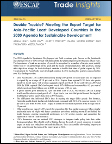 Double Trouble? Meeting the Export Target for Asia-Pacific Least Developed Countries in the 2030 Agenda for Sustainable Development (Trade Insights: Issue No. 15)This paper evaluates the prospects of least developed countries (LDCs) in Asia-Pacific in meeting the target set for LDCs to double their share of global exports by 2020, in Goal 17 of the Sustainable Development Goals (SDG). The paper notes that most Asia-Pacific LDCs have reported strong GDP growth turnout in recent years and are expected to grow by an average of 5.8% in 2016; difficulties faced by individual LDCs vary – Nepal, as an example, would need expansion at the average rate of 19% per year; LDCs can use national SDG strategies and go for longer-term goals—beyond the goals of export expansion—such as aiming to reach targets on trade cost reductions and trade facilitation. Author: Adam Heal, Miso Kim, Juliette Perche, Rajan Sudesh Ratna, and Pakkaporn Visetsilpanon Year: 2016 Download Tags: Least Developed Countries, Exports, Trade Facilitation, Trade, UNESCAP Technical Barriers to Trade: Reducing Trade Friction from Standards and RegulationsThe World Trade Organization (WTO) marks its 20th anniversary with a series of brochures to assist understanding of specific WTO agreements. This publication provides an overview of the WTO Agreement on Technical Barriers to Trade (TBT), which aims to ensure that technical regulations, standards, and conformity assessment procedures are non-discriminatory and do not create unnecessary obstacles to trade. It reviews how the TBT Committee, a unique multilateral forum for the discussion of standards and regulations affecting trade comprising WTO members, have created a predictable trading environment by enacting transparency provisions, and facilitated trade by encouraging WTO members to base their measures on international standards. Author: World Trade Organization Year: 2015 Download Tags: Technical Barriers to Trade, Trade, Trade Facilitation, WTO 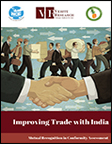 Improving Trade with India: Mutual Recognition in Conformity AssessmentThis study examines the current status of Sri Lankan exports to India, focusing on non-tariff barriers (NTBs) existing between India and Sri Lanka, including conformity assessment procedures applied in the two countries. Providing a comprehensive analysis of issues related to standards and regulations faced by processed food exporters from Sri Lanka to India, the study highlights how India's non-recognition of testing and certification conducted outside its borders forms a significant barrier, one that is critical to the performance of Sri Lanka's exports to India. It proposes that the most workable solution is to implement a Mutual Recognition Agreement, which will allow recognized, competent and accredited conforming assessment bodies from India and Sri Lanka to accept certificates of conformity, letting Sri Lankan exporters take advantage of duty concessions offered by the India-Sri Lanka Free Trade Agreement. Author: Verité Research Year: 2015 Download Tags: India, Sri Lanka, Trade, Harmonisation 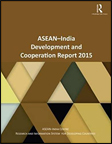 ASEAN-India Development and Cooperation Report 2015Re-engagement between India and ASEAN through increased cooperation across a range of issues, including trade and connectivity, is set to boost prosperity, competitiveness, growth and integration. With negotiations underway to establish a comprehensive free trade area through the Regional Comprehensive Economic Partnership, economic integration between India and Southeast and East Asia is set to scale new heights – further highlighting need for economic corridors with adequate cross-border infrastructure facilities that could facilitate increased production and services networks between ASEAN and Indian economies. This Report brings together experts and researchers who weigh in on ASEAN-India relations, analyzing the impact and implications of integration; assessing policy priorities, effectiveness, implementation imperatives and challenges; and discussing themes central to the economic sustainability of the region. Author: ASEAN–India Centre, Research and Information System for Developing Countries Year: 2015 Download Tags: ASEAN, India, Trade, Trade Facilitation Reducing Non-Tariff Barriers to Food Trade Between India and South Asia: Eliminating Phyto-Sanitary and Sanitary IssuesThis brief focuses on the impact of phyto-sanitary and sanitary measures as a significant non-tariff barrier to trade at India's overland trading posts and ports, from which it imports perishable goods from its neighbors in the SAARC region. Due to inadequate facilities to handle large, time-sensitive, and perishable consignments, India and its neighboring trade partners have experienced severe constraints on bilateral trade, which results to variability in time and cost of freight movement, and eventually affects price stability and availability of India's food stocks. Author: Hemant Shivakumar and Shiva C. Sharma Year: 2015 Download Tags: Sanitary and Phytosanitary Measures, India, SAARC, Trade, Non-Tariff Measures, Bangladesh Reforming Sri Lanka’s Trade and Investment Policies for Export GrowthThis Policy Insight examines four key areas of reform to increase Sri Lanka's competitiveness and promote external trade – trade tariff structure, trade and transport facilitation, promotion of foreign direct investment, and existing trade agreements with neighbors in South and Southeast Asia. It calls for a more transparent, simplified and rationalized tariff regime and adoption of measures to further strengthen trade and transport facilitation, including improvement of publication and administration of trade-related policies; increased usage of ICT for trade; and upgrading of trade-related infrastructure. Furthermore, it recommends pursuing beneficial trade agreements with neighbors, but with a more strategic approach in Sri Lanka's negotiations of trade agreements. Author: Institute of Policy Studies Sri Lanka Year: 2015 Download Tags: Sri Lanka, Trade, FDI World Trade Report 2015The World Trade Report 2015 is the first major study to comprehensively examine the benefits and challenges of implementing the World Trade Organization's Trade Facilitation Agreement (TFA) since its adoption in 2014. It discusses the importance of implementation of the TFA, its economic impact, and the steps being taken by the WTO to enable countries to maximize its benefits. This report presents further evidence that speedy and extensive implementation of the TFA will lead to bigger gains, particularly for developing countries and least developed countries. Author: World Trade Organization Year: 2015 Download Tags: Trade, LDC, Trade Facilitation 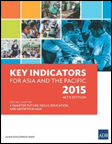 Key Indicators for Asia and the Pacific 2015The Key Indicators for Asia and the Pacific 2015 includes up-to-date available indicators for the 48 regional members of the Asian Development Bank, including numbers on energy, trade, transport, and tourism. Key trends noted in 2014 include the rising volume of intraregional exports globally, due to robust economic growth and expanding regional networks. For Asia and Pacific economies, primary source for merchandise imports was the region itself with a 49.7% share. In energy consumption, Asia and the Pacific now consumes more than 40% of the world's electricity, with the People's Republic of China and India accounting for nearly 70% of the region's output. This 46th edition of Key Indicators also includes a special chapter on skills, education, and growth in Asia, and emphasizes the need to focus on quality and ensure that the workforce has the skills to take the region through economic transition to prosperity. Author: Asian Development Bank Year: 2015 Download Tags: Economic Growth, Energy, Trade, Transport, India Lessons for South Asia from the Industrial Cluster Development Experience of the Republic of KoreaGrowth of manufacturing is crucial for economic growth and poverty reduction. This report highlights the industrial cluster development policy of the Republic of Korea, including its success factors in terms of policy implementation, and the promotion of industrial cluster development, drawing lessons that could enhance industrial growth in South Asia. It discusses how the government encouraged increase in exports through relevant policies and adapted to more technology- and knowledge-intensive industries which required innovation-driven policies. The experience outlined in the report could benefit large-scale industrial promotion in South Asia, such as the Economic Corridor Program in India. Author: Jong-il Kim Year: 2015 Download Tags: South Asia, Industrialization, Economic Corridor, Trade, ADB, India, Bangladesh, Sri Lanka, ADB RCI World Trade Organization Annual Report 2015The World Trade Organization (WTO) Annual Report 2015 provides an overview of WTO activities in 2014 and early 2015. It presents a timeline of two decades of the WTO -- from its origins succeeding the General Agreement on Tariffs and Trade to its current role in the multilateral trading system. It presents a chapter on how WTO helps developing countries build trade capacity and allows them to implement trade agreements. WTO training courses are organized for officials from developing countries each year. Author: World Trade Organization Year: 2015 Download Tags: Trade, Trade Policy, WTO, Tariffs, Energy, Bangladesh, India, Nepal, Sri Lanka, Trade Facilitation, Transport, Asia, Agriculture Building Firm-level Trade Competitiveness in Emerging EconomiesThis paper -- produced under the E15 Initiative and implemented jointly by the International Centre for Trade and Sustainable Development and World Economic Forum -- seeks to understand the framework of competitiveness and its implications for international trade. It discusses issues related to firm-level competitiveness, including the determinants; quality tools and models to address it, especially in developing economies and small and medium enterprises (SMEs); importance of diffusion and learning with a focus on SME growth; and specific policy interventions to improve firm-level competitiveness. Author: Sharmila Kantha Year: 2015 Download Tags: Firms, SME, Trade, Development, Sustainability, India, South Asia, Energy 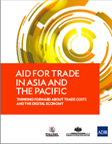 Aid for Trade in Asia and the Pacific: Thinking Forward About Trade Costs and the Digital EconomyAid for Trade (AfT) flows have increased each year since 2006 in Asia and the Pacific. While regional aggregate trade costs continue to fall, many subregions still struggle with trade costs that are substantially higher than the global average. This report highlights and explores how AfT contributed to these emerging trends in Asia and the Pacific and how to continue to address trade costs moving forward. Among the subregions, the Pacific (along with South Asia) has made the greatest improvements in the Logistics Performance Index from 2007-2014. Recent exporter surveys reveal a movement toward niche products and leveraging of e-commerce as a means to overcome cost and distance. Emerging digital technologies such as e-commerce further offers a new set of opportunities for economies in the region to grow through trade. Author: Asian Development Bank Year: 2015 Download Tags: Aid for Trade, Asia-Pacific, ICT, South Asia, Trade, Bangladesh, Bhutan, India, Sri Lanka, Agriculture, Energy, Transport SAARC: The Way AheadThis Observer Research Foundation Issue Brief examines the South Asia Association for Regional Cooperation as a regional grouping that is almost three decades old. It discusses trade arrangements such as the South Asian Preferential Trading Arrangement aimed towards a higher level of intraregional trade liberalization and economic cooperation, including the South Asia Free Trade Area for reduction of Customs duties on traded goods. The paper further studies areas of energy, connectivity, foreign direct investment, trade in services and subregional cooperation. The South Asia Subregional Economic Cooperation Program is offered as one of the steps in the direction of having a viable option for subregional cooperation. Author: Jayshree Sengupta Year: 2015 Download Tags: Regional Cooperation, SAARC, Trade, Connectivity, Energy, FDI, Investment, Free Trade Agreements, Services, South Asia 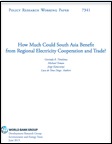 How Much Could South Asia Benefit from Regional Electricity Cooperation and Trade?This paper assesses the potential economic benefits of cross-border electricity cooperation and trade in South Asia from 2015 to 2040. It focuses on the possibilities of unlimited power flow across borders in response to regional demands and investment in generation and transmission to cost-effectively meet those demands. The study quantifies the potential economic benefits that South Asia could reap if the countries engage with full regional electricity trade and cooperation. Among South Asia Subregional Economic Cooperation countries, Bhutan and Nepal have the potential to cost-effectively supply electricity from hydroelectric resources in excess of their own demands; Bangladesh and India are likely to become more dependent on higher-cost coal as well as natural gas to generate electricity. The countries of the South Asia region also have non-coincident demand peaks across the year, implying gains from trade. Author: The World Bank Year: 2015 Download Tags: Energy, South Asia, Trade, Bangladesh, India, SASEC Aid for Trade in Asia and the Pacific 2015This Asian Development Bank report explores the potential of the digital economy to improve the inclusiveness of Aid for Trade (AfT). It uses the review of AfT as a springboard to explore new ways of thinking and how to address issues such as high trade costs in some regions. In particular, it considers how to build on information and communications technology and infrastructure connectivity from established AfT spending. The report also highlights the experience of exporters to illustrate the unique challenges and opportunities for trade-driven growth in a region where high trade costs are structural. Author: Alisa Di Caprio and Kati Suominen Year: 2015 Download Tags: ICT, Infrastructure, Trade, ADB, Asia-Pacific, Exports, Economic Growth, Trade Facilitation Clean Energy and Access to Infrastructure: Implications for the Global Trade SystemThis paper focuses on how international trade rules could better accommodate renewable energy trade through fixed infrastructure. It explains the World Trade Organization disciplines relevant to trade in clean energy via fixed infrastructure, in particular General Agreement on Trade in Services disciplines on energy services and General Agreement on Tariffs and Trade transit rules. Finally, it suggests policy options to adopt existing rules to the challenges of integrating clean energy transported via fixed infrastructure. Author: International Centre for Trade and Sustainable Development Year: 2015 Download Tags: Energy, Trade, WTO, India, South Asia, Sustainability, Tariff Cross-Border Electricity Cooperation in South AsiaStrengthening cross-border electricity cooperation in South Asia can be part of the solution for providing adequate and reliable electricity. This World Bank Policy Research Working Paper reviews the status of cross-border electricity cooperation in South Asia, identifies key regional-level barriers to expand cross-border cooperation and trade in South Asia, and discusses the extent to which current domestic sector policies impede greater cross-border electricity cooperation. Finally, the findings offer policy recommendations on increased cross-border trade and cooperation. Author: Anoop Singh, Tooraj Jamasb, Rabindra Nepal, and Michael Toman Year: 2015 Download Tags: Energy, Regional Cooperation, Regional Trade, Bangladesh, Bhutan, India, Maldives, Nepal, South Asia, Sri Lanka, Trade, Trade Policy, WB Trade in Value Added: Concepts, Estimation and AnalysisThis Asia-Pacific Research and Training Network on Trade working paper aims to explain the concept of Trade in Value Added (TiVA), which could properly measure exports of an economy. It discusses how TiVA is measured and how it can help in a more comprehensive understanding of trade flows. It also explains global value chains and reviews current initiatives in constructing regional and international input-output tables, and estimates of TiVA involving Asia-Pacific economies. Author: Marko Javorsek and Ignacio Camacho Year: 2015 Download Tags: Asia-Pacific, Global Value Chains, Trade 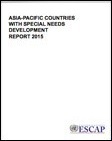 Asia-Pacific Countries with Special Needs Development Report 2015In the Asia-Pacific region, 36 out of the 58 economies are considered countries with special needs (CSN), which include least developed countries (LDC), landlocked developing countries, and small island developing States. This report highlights important areas that should be addressed as key priorities by CSNs such as economic diversification, external trade, South-South cooperation, and official development assistance including foreign direct investment. Bhutan and Nepal met the criteria for graduation from LDC status as of 2013. Other countries such as Bangladesh have a good chance of meeting the graduation criteria by 2018. Among the Small island developing States, Maldives is considered a success story in broadband internet connectivity. The results of this research show that Asia-Pacific CSNs must choose their paths to diversification carefully, depending on country circumstances. Author: United Nations Economic and Social Commission for Asia and the Pacific Year: 2015 Download Tags: Asia-Pacific, Least Developed Countries, Small Island Developing States, Bangladesh, Bhutan, Energy, FDI, Investment, Maldives, Nepal, Trade, Transport, UNESCAP Outward FDI by Indian Manufacturing MNEs: Impacts and Implications This Asia-Pacific Research and Training Network on Trade Working Paper investigates the home country effects of outward foreign direct investment (OFDI) on domestic activity of Indian multinational enterprises (MNEs). The empirical evidence suggests that OFDI by Indian MNEs has a positive impact on export intensity and research and development. In order to derive desired complementary benefits of OFDI by manufacturing firms, policies may be directed to enhance the country’s international supply chain connectivity for greater participation in global value chain and production network. Author: Khanindra Ch. Das Year: 2015 Download Tags: India, FDI, Global Value Chains, Trade, Export, Development, Manufacturing, UNESCAP Trade and Non-Tariff Measures: Impacts in the Asia-Pacific Region This study brings together existing evidence on the occurrence and trade impacts of non-tariff measures (NTMs) in the Asia-Pacific region. It aims to contribute to an improved understanding on their trade impacts on developing countries. The report focuses on the consequences of NTMs for developing economies and South-South trade. The chapters include an overview of tariff and non-tariff measures, an evaluation of NTMs and trade, and an examination of Sanitary and Phytosanitary Measures and Technical Barriers to Trade. Finally, the study concludes by reviewing mechanisms for streamlining NTMs and promoting developing countries’ trade, particularly at the regional level. Author: United Nations Economic and Social Commission for Asia and the Pacific Year: 2015 Download Tags: Asia-Pacific, Tariff, Trade, Sanitary and Phytosanitary Measures, Technical Barriers to Trade, UNESCAP Mega-regionals and the Regulation of Trade: Implications for Industrial PolicyThis report reviews key industrial policy issue areas being negotiated in mega-regional free-trade agreements—in particular, the Trans-Pacific Partnership—and evaluates how possible outcomes will impact the international trading system. Reviewing areas where the mega-regionals may impose systemic constraints, including border measures, technical barriers to trade, sanitary and phytosanitary measures, and e-commerce measures, the report discusses a possible future framework for industrial policy that integrates the additional policy constraints and changes introduced by these agreements. Author: Dan Ciuriak and Harsha V. Singh Year: 2015 Download Tags: Trade, Trade Facilitation, Free Trade Agreements Enabling Trade: Increasing the Potential of Trade Reforms This publication reviews specific elements of trade reform and proposes potential improvements that governments can make in collaboration with the private sector, using case examples to illustrate supply chain bottlenecks. It further examines how national governments and the private sector can optimize
ongoing trade reforms to reduce or eliminate these obstacles. Author: Bain and Company and the International Trade Centre Year: 2015 Download Tags: Trade, Private Sector, Trade Policy Towards Trade Policy Analysis 2.0: From National Comparative Advantage to Firm-Level Trade DataThis paper argues for the need to upgrade current analytical tools for trade policy analysis and complement them with more detailed, firm-level data. Firm-level data allows a more refined assessment of future impact of trade policy initiatives, improves ex-post assessments, and enhances communication leading to a meaningful engagement with stakeholders, thus reducing public misperceptions about trade policy. A Trade Policy Analysis 2.0 could contribute to a better understanding of international trade for firm competitiveness, job creation, and consumer welfare. Author: Lucian Cernat Year: 2015 Download Tags: Trade Policy, Firms, Trade, ADB Electricity Consumption, Output, and Trade in BhutanThis ADB South Asia Working Paper examines the relationship between electricity consumption, international trade, and economic growth using an augmented production function framework. The findings show that Bhutan is energy-dependent and can promote economic growth through future investment in hydropower. More specifically, the results show that a 1% increase in (i) electricity consumption generates 0.03%-0.05% increase in output, (ii) total trade results in 0.5% increase in output, (iii) trade openness results in 1% increase in output. Author: Hooi Hooi Lean and Russell Smyth Year: 2015 Download Tags: Energy, Trade, Bhutan, ADB, South Asia, Hydropower, ADB RCI 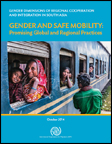 Gender Dimensions of Regional Cooperation in South Asia: Gender and Safe Mobility – Promising Global and Regional PracticesThis technical report analyzes global practices related to gender equality and safe migration, and their applicability to the context of South Asia. "Hard" aspects, such as physical infrastructure and equipment including border infrastructure, passenger holding facilities and surveillance cameras, and "soft" aspects, such as regional, bilateral and/or country-specific policies, programs, mechanisms and institutional linkages of safe mobility, are presented. The report also presents national policies and procedures that promote safe mobility. Given the lessons drawn from the reviewed policies and practices, it highlights the need for stronger evidence-based approaches in understanding the complex experience of women migrant workers, and identifies the need for more regular peer exchange through periodic regional dialogues of key stakeholder groups. Author: International Organization for Migration Year: 2014 Download Tags: Gender, Migration, South Asia, Bangladesh, Bhutan, India, Nepal, Transport, Trade 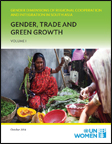 Gender Dimensions of Regional Cooperation in South Asia: Gender, Trade and Green Growth (Volumes I and II)This technical report presents an analysis of the interconnection between gender equality, regional trade and sustainable development in selected areas of four South Asian countries. In general, the report found women's contributions to total exports of all countries to be low, and in green exports to be lower. It identifies constraints and challenges, such as limited training in entrepreneurship, gender stereotypes related to green trade, existing gaps in policy framework, and weak access to technology, hindering women's participation in three green trade industries - agriculture and agro-processing, renewable energy, and ecotourism. The report looks at possible entry points for women, and recommended a list of actions to tap these identified entry points, including the need for greater exchange and cross-fertilization of experience among associations of women entrepreneurs and women’s chambers of commerce in South Asia. Author: Shreyasi Jha, Ritu Dewan, Amee Misra, Saloni Singh, Navanita Sinha, Maheen Sultan and Sonam Tobgay Year: 2014 Download Tags: Gender, Trade, Sustainability, South Asia, Bangladesh, Bhutan, India, Nepal 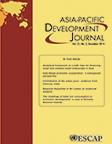 Asia-Pacific Development Journal Vol. 21, No. 2, December 2014The paper "Indo-Nepal Economic Cooperation: A Subregional Perspective" published in this issue of the Asia-Pacific Development Journal (APDJ) explores how subregional engagement among bordering regions can stimulate economic cooperation among countries in South Asia. It assesses the current status and potential of greater integration between India and Nepal, and develops a SWOT (strength-weakness-opportunity-threat) analysis reflecting on the need for a subregional approach to promotion of regional cooperation. APDJ, published twice a year by the Macroeconomic Policy and Development Division of UNESCAP, provides a platform for exchange of knowledge, experience, ideas, information and data on all aspects of economic and social development issues and concerns facing the region. Author: United Nations Economic and Social Commission for Asia and the Pacific Year: 2014 Download Tags: Economic Integration, India, Nepal, Trade, Bangladesh, Sri Lanka, Transport, Trade, Tourism  Asia-Pacific Development Journal Vol. 21, No. 2, December 2014The paper "Indo-Nepal Economic Cooperation: A Subregional Perspective" published in this issue of the Asia-Pacific Development Journal (APDJ) explores how subregional engagement among bordering regions can stimulate economic cooperation among countries in South Asia. It assesses the current status and potential of greater integration between India and Nepal, and develops a SWOT (strength-weakness-opportunity-threat) analysis reflecting on the need for a subregional approach to promotion of regional cooperation. APDJ, published twice a year by the Macroeconomic Policy and Development Division of UNESCAP, provides a platform for exchange of knowledge, experience, ideas, information and data on all aspects of economic and social development issues and concerns facing the region. Author: United Nations Economic and Social Commission for Asia and the Pacific Year: 2014 Download Tags: Economic Integration, India, Nepal, Trade, Bangladesh, Sri Lanka, Transport, Trade, Tourism World Tariff Profiles 2014This statistical yearbook devoted to market access for goods contains a comprehensive compilation of tariff parameters for each of the 160 World Trade Organization members, plus a number of other countries and customs territories where data is available. Each country profile presents information on tariffs
imposed by each economy on its imports, including an analysis of market access conditions in its major export markets. Statistics for all countries allow easy comparisons between countries and sectors, as well as between bound and applied tariffs. Author: World Trade Organization, International Trade Centre, and United Nations Conference on Trade and Development Year: 2014 Download Tags: WTO, Customs, Tariff, Bangladesh, India, Maldives, Nepal, Sri Lanka, Transport, Tariffs, Trade SME Competitiveness and Aid for Trade: Connecting Developing Country SMEs to Global Value ChainsThis joint ITC-WTO study discusses constraints faced by small and medium-sized enterprises (SMEs) in international trade, particularly by least developed countries. It reviews how Aid for Trade addresses these challenges through a sample of 23 Diagnostic Trade Integration Studies. Three bottlenecks emerge – quality of business environment, access to finance, and lack of institutional support to overcome trade-related challenges. This study also highlights actions taken by companies to integrate SMEs into their supply chains and concludes with an analysis of recent private sector program evaluations. Author: International Trade Centre and World Trade Organization Year: 2014 Download Tags: SME, Trade, Private Sector, Small and Medium Enterprises, Bhutan, India, Nepal, Sri Lanka, Sustainability A World Trade Organization for the 21st Century: The Asian PerspectiveThis Asian Development Bank Institute book examines key changes in the world trading system and explores policy implications for Asia. Through a compilation of essays from prominent international and Asian trade experts, this book presents interaction of market forces and trade regulation. Lessons from the Asian experience offer new approaches and economic policies to sustain growth, presenting the World Trade Organization as a forum to improve regional and global trade governance in the 21st century. Author: Richard E. Baldwin, Masahiro Kawai, Ganeshan Wignaraja (Eds.) Year: 2014 Download Tags: Trade, Trade Policy, WTO, Bangladesh, Bhutan, Energy, India, Maldives, Nepal, Sri Lanka, Transport Seaborne Trade between South Asia and Southeast Asia This Asian Development Bank Institute paper examines trade and the main ports around the Bay of Bengal to identify projects that will enable trade and contribute to improved maritime infrastructure. It also reviews the nature of trade and trade patterns, particularly through the Indian East Coast Corridor study. The paper develops further strategic options for seaport adjustment around the Bay of Bengal to support trade evolution, policy assessment, and other constraints. Author: David Wignall, Mark Wignall Year: 2014 Download Tags: Transport, Trade, Ports, ADB, India, Economic Corridor, Bangladesh, Energy, Myanmar, Sri Lanka Regional Transit Agreement in South Asia: An Empirical InvestigationThis discussion paper published by the South Asia Watch on Trade, Economics and Environment assesses the potential gains of a sub-regional transit arrangement and the removal of other border-trade barriers, particularly the eastern South Asia sub-region (Bangladesh, Bhutan, India and Nepal). It also discusses the link between transit and trade flows, provides profiles of intra-regional transit trade and current transit arrangements in South Asia, and identifies efficient regional transit corridors using linear programming or the Data Envelopment Analysis model. Author: Prabir De and Arvind Kumar Year: 2014 Download Tags: South Asia, Trade, Transport, Economics, Economic Corridor, SASEC, SAARC, UNESCAP, Customs, Harmonisation, Bangladesh, Bhutan, India, Nepal, Maldives, Sri Lanka Statistical Yearbook for Asia and the Pacific 2014The Statistical Yearbook contains comparative statistics and facts about the 58 regional members and associate members of the Economic and Social Commission for Asia and the Pacific. It includes brief analyses of 32 key development features such as energy supply and use, international trade, and transport, among others. In energy, the region’s production structure is highly resource-intensive, although per capita energy use is low. The section on international trade recommends focusing on raising domestic value-added rather than increasing gross exports in Asia and the Pacific. Finally, investment in environmentally sustainable transport is encouraged. Author: United Nations Economic and Social Commission for Asia and the Pacific Year: 2014 Download Tags: Asia-Pacific, Energy, Trade, Transport, Bangladesh, Bhutan, India, Maldives, Nepal, Sri Lanka NTMs in South Asia: Assessment and AnalysisThe study “NTMs in South Asia: Assessment and Analysis” analyzes how Non-tariff Measures (NTMs) give rise to non-tariff barriers, which are becoming increasingly crucial for advancing trade cooperation among member countries of the South Asian Association for Regional Cooperation, yet remain less-addressed. The study examines export potential and actual export of South Asian countries, and attempts to highlight gains from reduction in transaction costs in bilateral trade. It also notes that initiatives for trade facilitation reforms in South Asia at the regional level remain low in incentives and have yet to produce significant results. The study closes with several recommendations for reducing and eliminating NTMs. Author: Selim Raihan, Mostafa Abid Khan, and Shaquib Quoreshi Year: 2014 Download Tags: Trade Facilitation, Trade, SAARC, Bangladesh, Bhutan, India, Maldives, Nepal, South Asia, Sri Lanka Bridging Transport, ICT, and Energy Infrastructure Gaps for Seamless Regional ConnectivityThis publication is a contribution by the United Nations Economic and Social Commission for Asia and the Pacific to deliberations at the Second United Nations Conference on Landlocked Developing Countries (LLDCs) in Vienna, Austria, 3-5 November 2014. It shows regional connectivity as an unfinished agenda and bridging infrastructure gaps as a complex challenge for LLDCs. While physical infrastructure is a priority, this report argues that deeper regional integration – through regionally cohesive and terrestrial networks – is key to effectively linking Asian LLDCs to the region’s infrastructure networks. Author: United Nations Economic and Social Commission for Asia and the Pacific Year: 2014 Download Tags: Transport, ICT, Energy, UNESCAP, SASEC, Connectivity, Infrastructure, Bangladesh, India, Nepal, Sri Lanka, Trade, Trade Facilitation, Policy, Trade Policy Review of Maritime Transport 2014The Review of Maritime Transport is an annual UNCTAD flagship publication since 1968. It provides analysis of structural and cyclical changes affecting seaborne trade, ports and shipping, freight markets, and transport and regulatory frameworks. It further presents statistics, data, and insights on ownership of the world fleet, with South Asia dominating the market for ship recycling. This year’s special chapter focuses on the challenges faced by the world’s Small Island Developing States (SIDS) and reviews shipping-related challenges resulting from SIDS size, remoteness, and exposure to natural hazards, including impacts of climate change. Author: United Nations Conference on Trade and Development Year: 2014 Download Tags: Transport, Ports, Small Island Developing States, UNCTAD, Trade, South Asia, Bangladesh, India, Maldives, Sri Lanka 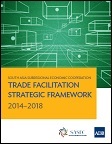 SASEC Trade Facilitation Strategic Framework 2014-2018The South Asia Subregional Economic Cooperation (SASEC) Trade Facilitation Strategic Framework 2014-2018 builds on the momentum of member countries over recent years in forging ahead with many significant improvements to facilitate, and ultimately increase, trade in the subregion and with the rest of the world. It supports the mission of the SASEC Transport and Trade Facilitation Strategy “to promote the prosperity of the subregion by facilitating the efficient movement of trade across the borders”, and focuses on five priority areas: customs modernization and harmonization; standards and conformity assessment strengthening; cross-border facilities improvement; through-transport facilitation; and institution and capacity building. Author: Asian Development Bank Year: 2014 Download Tags: SASEC, Trade Facilitation, Regional Cooperation, Transport, Trade, Customs, Standards, Harmonisation, Regional Integration, ADB, Bangladesh, Bhutan, India, Maldives, Nepal, Sri Lanka, South Asia, ADB RCI 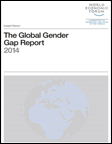 The Global Gender Gap Report 2014The Global Gender Gap Index benchmarks national gender gaps on economic, political, education and health criteria. According to this 2014 edition, the Asia and Pacific region has closed 66% of its overall gender gap. However, it continues to rank second from last on the Economic Participation and Opportunity subindex. According to the report, Bangladesh has achieved its highest overall score since 2006, with significant improvements on the Economic Participation and Opportunity, and the Educational Attainment and Health and Survival subindexes. However, it still ranks 127th on the Economic Participation and Opportunity subindex, a score still below the subindex average. Nepal ranks second highest in percentage change for improvements in the Educational Attainment, Health and Survival, and Political Empowerment subindexes, but ranks 122nd on the Economic Participation and Opportunity subindex. India is also below average on the Economic Participation and Opportunity subindex. Author: World Economic Forum Year: 2014 Download Tags: Gender, Economic Participation, Trade 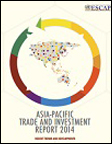 Asia-Pacific Trade and Investment Report 2014: Recent Trends and DevelopmentsThis Asia-Pacific Trade and Investment Report 2014 provides an analysis of recent regional trends and developments in: (a) intraregional trade in goods and services; (b) foreign direct investment (FDI);
(c) trade facilitation measures; (d) trade policy measures; and (e) preferential trade agreements. According to this report, South and South West Asia’s FDI inflow improved, registering a 6% increase, with India holding the largest FDI share. However, performance in key trade and investment indicators was weak in 2013, with merchandise exports decreasing by 0.2%, around 71% of exports going to destinations outside the Asia-Pacific region, and around 64% of merchandise being imported from extra-regional sources. This publication also provides a preliminary regional assessment of the implementation of trade facilitation measures included in the TFA. This section concludes by identifying areas that countries need to focus on in order to further advance trade facilitation in the region. Author: UNESCAP Year: 2014 Download Tags: FDI, Trade, Trade Facilitation World Trade Report 2014 – Trade and Development: Recent Trends and the Role of the WTOThis annual publication highlights the relationship between trade and development, including changes since the start of the millennium. It identifies four key trends that altered the way trade affects development outcomes – accelerated economic growth in developing countries, expansion of global value chains, increase in agricultural and natural resource prices, and global nature of macroeconomic shocks. This report also explores how these trends have reshaped the role of trade in facilitating development and how recent development gains allow developing countries to adapt and mitigate risks. Author: World Trade Organization Year: 2014 Download Tags: WTO, Global Value Chains, Trade, Economic Growth, Agriculture, Trade Facilitation, Development, Bangladesh, Bhutan, India, Maldives, Nepal, South Asia, Sri Lanka South Asia Economic Focus: The Export OpportunityThis bi-annual report presents the recent economic developments, outlook, and policy of the following South Asian countries – Afghanistan, Bangladesh, Bhutan, India, the Maldives, Nepal, Pakistan, and Sri Lanka. It highlights developing country growth as fairly robust. Meanwhile, India’s growth rate is slowly increasing and its inflation rate declining. South Asian economies solidified their external positions by easing pressures to finance current account deficits, yet face domestic challenges such as reducing fiscal risks, supporting higher levels of investment, and sustaining export growth. Author: The World Bank Year: 2014 Download Tags: South Asia, Trade, Economics, WB, Bangladesh, Bhutan, India, Maldives, Nepal, Sri Lanka Asian Development Outlook 2014 Update: Asia in Global Value ChainsAs developing Asia continues along a stable growth path, India maintains a 5.5% growth forecast for 2014 and shows promise of a turnaround. Reforms are envisioned for 2015, including a forecast 0.3% upgrade to 6.3%. Bhutan recorded the largest current account deficit as a percentage of GDP, due to imports used in construction of several large hydropower projects that will expand its energy export capacity to India. Meanwhile, South Asia is expected to perform with greater momentum in 2015, with a growth forecast upgrade to 6.1% from 5.8%. Most of the improvements in the subregion are from India’s deficit and Bangladesh’s current account. Nepal also shows improved outlook for 2015. Author: Asian Development Bank Year: 2014 Download Tags: South Asia, Global Value Chains, India, Economics, Trade 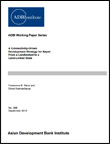 A Connectivity-Driven Development Strategy for Nepal: From a Landlocked to a Land-Linked StateTransforming Nepal from a landlocked into a land-linked state, the authors argue, could be key to unlocking the country's much-awaited growth. With its strategic location between India and the People's Republic of China, a connectivity-driven development strategy could energize Nepal's lackluster post-conflict economic performance. Further, Nepal implements a multi-track approach to promoting regional cooperation and integration in connectivity with its neighbors, reinforced through participation in South Asian Association for Regional Cooperation, Bay of Bengal Initiative for Multi-Sectoral Technical and Economic Cooperation, and South Asia Subregional Economic Cooperation. By identifying ten priority projects that could further boost Nepal's connectivity, the paper also discusses how strengthening Nepal's transport, energy, and trade links could benefit the region. However, the authors also warn against “internal threats” to Nepal's development—corruption and the country's difficult political situation. Author: Pradumna B. Rana and Binod Karmacharya Year: 2014 Download Tags: Nepal, Economic Corridor, Regional Trade, Connectivity, Development, Economic Growth, SASEC, India, Regional Cooperation, Regional Integration, SAARC, BIMSTEC, Transport, Energy, Trade Economic and Social Survey of Asia and the Pacific 2014This 2014 edition of UNESCAP's flagship publication emphasizes the importance of furthering regional connectivity in Asia-Pacific—a region which, despite significant reductions in poverty levels, is now witnessing rising income inequality, both within and between countries. It calls for driving the region's growth by exploiting the interdependence and synergies of five elements: trade and transport connectivity, ICT networks, energy connectivity, people-to-people networks, and promotion of knowledge-based economies, and advocates approaching connectivity as a regional public good. Author: UNESCAP Year: 2014 Download Tags: Economic Integration, Regional Cooperation, Poverty Reduction, Asia-Pacific, Connectivity, Energy, ICT, Bangladesh, Bhutan, India, Maldives, Sri Lanka, Trade, Transport, UNESCAP 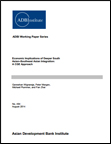 Economic Implications of Deeper South Asian–Southeast Asian Integration: A CGE ApproachHigh tariff and non-tariff barriers, and costly transport links and inefficient trade facilitation measures continue to hamper the growth of trade between South Asia and Southeast Asia. This paper explores whether potential gains from improved connectivity—via Myanmar as inter-regional bridge—justify a high level of investment. Using an advanced computable general equilibrium (CGE) model, reduction of inter-regional tariffs, decreasing of non-tariff barriers by 50%, and cutting down of trade costs between South Asia and Southeast Asia by 15% yields a prediction of 8.9% rise in welfare in South Asia and Southeast Asia, and an increase of 6.4% in gross domestic product by 2030. Author: Ganeshan Wignaraja, Peter Morgan, Michael Plummer, and Fan Zhai Year: 2014 Download Tags: Transport, Trade Facilitation, South Asia, Southeast Asia, Regional Integration, Tariff, Trade, Connectivity, Investment, Myanmar, GDP 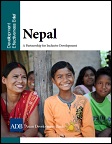 Nepal: Development Effectiveness Brief 2014Nepal has the potential to achieve more inclusive growth and can largely benefit from regional cooperation and integration with its developing neighbors. It is also benefiting from South Asia Subregional Economic Cooperation, a flagship ADB-supported program that promotes economic cooperation and integration in areas of trade facilitation (custom modernization and transport connectivity), power development, trade, and tourism development. This brief further explores ADB’s contribution to inclusive development and poverty reduction, energy, and transport. Exporting energy when surplus is available is one way of meeting seasonal demand by subregional cooperation and power trade. Transport infrastructure is also another key ingredient to equitable, inclusive growth that can address challenges such as lack of market access, inadequate roads, and poor connectivity. Author: Asian Development Bank Year: 2014 Download Tags: Nepal, Regional Cooperation, South Asia, ADB, Connectivity, Energy, Roads, SASEC, Trade, Transport 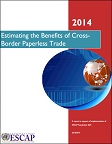 Estimating the Benefits of Cross-Border Paperless TradeCross-border paperless trade is trade that occurs on the basis of electronic communications and has been part of customs reform efforts in a variety of countries. Increased implementation of cross-border paperless trade is high on the trade facilitation agenda in Asia-Pacific. This report considers six measures to calculate estimates of possible economic benefits of cross-border paperless trade through counterfactual simulations using 2013 data and simple econometric models. Simulation results reveal that this new generation of trade facilitation can significantly reduce trade costs and boost intra- and extra-regional trade in the region. Partial implementation of these measures can lead to an export increase of $36 billion annually. Total direct cost savings across all trade is about $1 billion per annum for partial reform, and $7 billion for full implementation. Author: United Nations Economic and Social Commission for Asia and the Pacific Year: 2014 Download Tags: Trade Facilitation, Trade, Asia-Pacific, UNESCAP, Customs, Export, Bangladesh, Bhutan, India, Maldives, Nepal, Sri Lanka 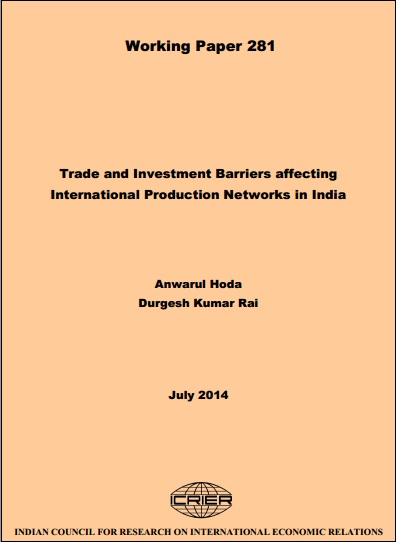 Trade and Investment Barriers Affecting International Production Networks in IndiaRecognizing India as an outlier in development of international production networks with the lowest participation among Asian countries, this study investigates the reason for India’s lackluster participation in production-sharing networks. Using desk work, field surveys, and interviews, an analysis is adopted with three comparator countries in the region that have been successful in production-sharing arrangements as well as industrial growth – China, Malaysia, and Thailand. It further describes foreign direct investment inflows into India, analyzes behind-the-border investment environment, and provides recommendations to improve investment climate and hasten the pace of manufacturing development in India. Author: Anwarul Hoda and Durgesh Kumar Rai Year: 2014 Download Tags: India, Trade, Production Networks, Investment, Thailand, Manufacturing, Customs, Economic Corridor, Energy, Trade Facilitation, Transport 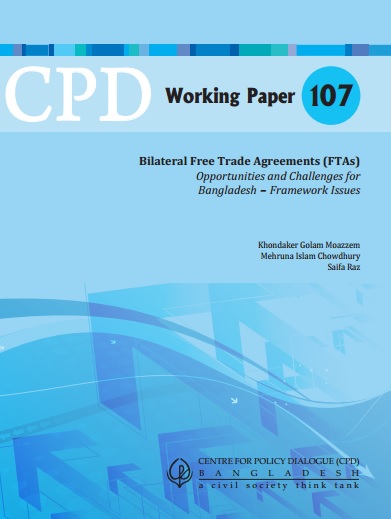 Bilateral Free Trade Agreements: Opportunities and Challenges for Bangladesh - Framework IssuesSlow progress of negotiations for multilateral trade under the World Trade Organization and the global economic crisis have led to a rise in Free Trade Agreements (FTAs) in developing countries, yet Bangladesh has remained ambivalent in setting its strategies regarding FTAs. Instead, it has opted to maintain exports through preferential market access with its partners among developed countries. This report cautions that with the increasing reduction of tariffs among developed countries, Bangladesh's preferential market access with these trading partners will soon lose its luster. On the other hand, exploring alternative markets by signing FTAs among least developed countries and developing countries in South Asia may be a better option for Bangladesh. This policy paper argues that Bangladesh needs to expand its export market by exploring bilateral FTAs with other trading partners, including its neighbors in the South Asia region. Author: Khondaker Golam Moazzem, Mehruna Islam Chowdhury, and Saifa Raz Year: 2014 Download Tags: Trade, Trade Policy, Bangladesh Trade Facilitation and Paperless Trade ImplementationThis paper reports survey findings on progress in implementing various trade facilitation and paperless trade measures made by 29 countries in Asia and the Pacific, including six SASEC member countries. Factors considered include pre-arrival clearance, post-clearance audit, National Single Window, and authorized operator programmes. The survey reveals that while countries have prioritized automation and paperless trade at the regional level, there is an urgent need for regional arrangements that will facilitate cross-border exchange of trade-related electronic documents and information to enable smoother trade facilitation. Author: Tengfei Wang and Yann Duval Year: 2014 Download Tags: Trade Facilitation, Regional Cooperation, Trade, Asia-Pacific, SASEC, Single Window, UNESCAP, Customs, Bangladesh, Bhutan, India, Maldives, Nepal, Sri Lanka Globalization in an Age of Crisis: Multilateral Economic Cooperation in the 21st CenturyIs globalization in retreat, ask editors of Globalization in an Age of Crisis. Hosting discussions on multilateralism in trade and macroeconomic issues, the book considers international policy making following the global economic crisis of 2008-2009 that saw countries prioritize policy initiatives advancing national interests over international economic cooperation. Critical junctures are considered, including the current WTO round and whether it can deliver on its promise to improve trading prospects of developing countries (chapter 3), and the compatibility of preferential trade agreements (PTAs) with multilateral trading systems (chapter 4). Empirical assessments measuring the 'successes' of existing PTAs are also included. Author: Robert C. Feenstra and Alan M. Taylor Year: 2014 Download Tags: Trade Policy, Trade, Economics, WTO Deepening India’s Shallow Export BasketIndia’s bilateral trade with the People’s Republic of China (PRC) grew to US$70 million in 2011 and growth trajectories suggest that bilateral trade will continue to expand. India exports low value-added products such as ores, cotton, and copper to the PRC; and imports high value-added and technology sophisticated products such as electrical machinery and equipment from the PRC. India suffers from lack of export diversification although manufactures are an increasing share of India’s bilateral export basket. The proposed PRC-India Free Trade Agreement (FTA) can deepen India’s export basket; and FTA-based reforms on pharmaceuticals, and information and technology services sector can significantly impact India’s bilateral trade composition. Author: Asian Development Bank Year: 2014 Download Tags: India, Trade, Trade Policy Unpacking the Bali Package: a Snapshot of Bali Ministerial Decisions of WTO MembersThe Bali Package represents a key turning point for the World Trade Organization. Covering trade facilitation, agriculture, and trade issues for developing and least-developed countries, it is set to increase trade activity on a global scale and lower the cost of doing international trade. This paper acts as a precursor to its implementation by identifying challenges countries may face, giving a brief history of each pillar, exploring the next possible steps for each ministerial decision, and examining the likely effects of this decision/agreement on various other stakeholders, particularly on consumers. Author: Archana Jatkar and Chenai Mukumba Year: 2014 Download Tags: Trade, Trade Facilitation, Trade Policy, WTO, Agriculture, Least Developed Countries, India Simulating World Trade in the Decades Ahead: Driving Forces and Policy ImplicationsThis working paper considers economic prospects up to the year 2100, offering assumptions about key exogenous variables, providing a baseline for climate change policy evaluation, and discussing sectoral and trade issues. The paper combines an economic growth model with a multi-sectoral model to construct scenarios for around 150 countries up to a maximum time horizon of 2035, with forecasts on a number of key variables such as energy prices, demographics, etc. It suggests that trends toward increased regionalization may be reversed, with multilateral trade relationships gaining in importance. Author: Lionel Fontagné, Jean Fouré and Alexander Keck Year: 2014 Download Tags: Climate, Trade, Statistics, Trade Policy, Policy, Energy, Tariff, ASEAN, India, Environment Potential Growth in Emerging AsiaThis paper estimates potential growth for China, India, and five ASEAN countries during 1993-2013. It states that India has exhibited a slowdown in potential growth, reflecting a decline of total factor productivity growth. The paper also puts forward that demographic factors will be much more supportive in the future as the working-age population starts to decrease. Author: Rahul Anand, Kevin Cheng, Sidra Rehman, Longmei Zhang Year: 2014 Download Tags: Economics, India, ASEAN, Trade 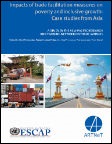 Impacts of Trade Facilitation Measures on Poverty and Inclusive Growth: Case Studies from Asia - A Study by the Asia-Pacific Research and Training Network on TradeThis book addresses the gap between trade facilitation and poverty reduction and contains a compilation of specific case studies that explores the linkages between trade facilitation measures and poverty. It also presents cross-country analysis that examines inequality in low- and middle-income countries. Other chapters discuss economic corridors and microfinance development as trade facilitation measures and examine access to trade facilitation by export-oriented micro, small, and medium-sized enterprises. It also explores barriers to international entrepreneurship for the vegetable business in Bangladesh. Finally, it offers a comprehensive evaluation of the effectiveness of Export Processing Zones (EPZs) on poverty reduction. Author: Ravi Ratnayake, Rajan Sudesh Ratna, Martina Francesca Ferracane and Yann Duval Year: 2013 Download Tags: Trade Facilitation, Bangladesh, Trade, Poverty Reduction, Economic Corridor, Small and medium enterprises, India, SAARC, Customs, Pakistan South Asia Energy Security: Challenges and OpportunitiesThe imbalance between the growing demand for energy in South Asia and the countries' uneven energy resources has led to weakened energy security in the region. Import dependence from outside the region has become a costly solution. As countries in South Asia move to expand their economies, fostering cross border energy trade and promoting energy investment opportunities could be a better alternative to resolving the energy deficit. However, energy cooperation within South Asia is challenged by major issues that could impede regional energy trade that is beneficial for all. Author: Bhupendra Kumar Singh Year: 2013 Download Tags: Energy, South Asia, Bangladesh, Bhutan, India, Nepal, Pakistan, Sri Lanka, Trade, Hydropower 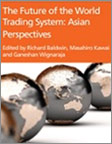 The Future of the World Trading System: Asian PerspectivesAccording to WTO Director-General Pascal Lamy, the problems facing Asian regionalism are a scaled-down version of the problems facing the world. Thus, solutions that address Asia’s noodle bowl would most likely work at the global level. This concise collection of short chapters is based on longer papers presented at the Geneva Conference on 11-12 March 2013, organized by the Asian Development Bank Institute and Centre for Trade and Economic Integration at the Graduate Institute of International and Development Studies, in collaboration with WTO. The chapters are written by leading Asian and international trade experts on key changes taking place in the world trading system and its policy implications for Asia. Author: Richard E. Baldwin, Masahiro Kawai, and Ganeshan Wignaraja, eds. Year: 2013 Download Tags: Regional Integration, Trade Policy, Trade, Global Value Chains, Global Production Network, Regional Trade, Trade Facilitation, India Connecting South Asia and Southeast Asia: Interim ReportThis joint ADB-ADBI study focuses on how improved physical connectivity (infrastructure) and associated institutional connectivity (software) can enhance more effective economic integration between the two subregions. The report reviews economic ties, identifies issues and constraints, and explores better connectivity and closer economic integration. It also examines major developments in South Asia-Southeast Asia trade and investment, economic cooperation, role of economic corridors, and regional cooperation initiatives. Author: ADB and ADBI Year: 2013 Download Tags: Infrastructure, Economic Integration, Regional Cooperation, Trade, Transport, Trade Facilitation, Economic Corridor, Energy 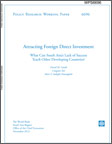 Attracting Foreign Direct Investment: What Can South Asia's Lack of Success Teach other Developing Countries?Despite South Asian nations experiencing increased foreign direct investment (FDI) flows over the past decade by gaining a large share of cross border investments, FDI inflows in South Asian countries still remain the lowest relative to gross domestic product (GDP) among developing country regions. This paper uses an empirical model that accounts for possible trends in convergence in the ratio of FDI to GDP between countries and cross-sectional data for 78 countries from 2000 to 2011. In examining the historical patterns of South Asia’s FDI and its connection with the policy environment, policymakers can identify constraints to FDI and boost potential for broad-based growth. Author: David M. Gould, Congyan Tan and Amir S. Sadeghi Emamgholi Year: 2013 Download Tags: South Asia, Trade Policy, FDI, GDP, Investment, Governance, Transparency, Economic Growth, Financial Sector, Regional Cooperation, Trade UNCTAD Handbook of Statistics 2013This UNCTAD Handbook of Statistics provides essential data for analyzing and measuring world trade, international financial flows, investment, and development. It documents the south-south trend led by developing Asia and reveals how exports among developing countries remain centered in the Asian region. The share of south-south trade in total world exports doubled over the last 20 years to over 25 per cent. Apart from The People's Republic of China and other major petroleum and gas exporters, India is among the countries that have most expanded their south-south trade during the last two decades. Author: United Nations Conference on Trade and Development Year: 2013 Download Tags: South Asia, Statistics, Trade, India Evaluating Aid for Trade on the Ground: Lessons from BangladeshThis paper assesses the effectiveness and impact of aid for trade (AfT) in Bangladesh in a series of eight country studies by the International Center for Trade and Sustainable Development. The study argues that the results for AfT are mixed for Bangladesh since it has addressed supply side constraints and contributed to enhancing export competitiveness. However, lack of efficient administrative mechanisms, limited human capacity, and political instability that lead to low absorption capacity limits the overall effectiveness and impact of AfT in Bangladesh. Author: Fahmida Khatun, Samina Hossain and Nepoleon Dewan Year: 2013 Download Tags: Bangladesh, Trade, Aid for Trade, Sustainability, Export, Development, Asia, Gender, LDC, Least Developed Countries Deepening Economic Cooperation between India and Sri LankaThis book analyzes the performance and impact of the India-Sri Lanka free trade agreement over the past decade and suggests the way forward. India became an important source of imports for Sri Lanka immediately after the implementation of the free trade agreement. Author: Asian Development Bank Year: 2013 Download Tags: Regional Cooperation, Trade Policy, India, Sri Lanka, Trade, Economic Cooperation, India-Sri Lanka Free Trade Agreement, Free Trade Agreements, Services, Trade Facilitation, Exports, Import Unlocking Bangladesh-India Trade: Emerging Potential and the Way ForwardThis working paper breaks down the importance of trade cooperation between Bangladesh and India by taking a closer look at the impacts of Bangladesh's increased market access to India, and their improved border connectivity. Employing data from national government resources and multilateral development organizations including the International Monetary Fund, World Bank, and World Trade Organization, the study provides an estimate of the trade potential of Bangladesh and India, and calculates the implications on costs of trade facilitation, among others. It also discusses ongoing challenges in bilateral relations and provides recommendations that will enable larger gains for the two contiguous countries. Author: Prabir De, Selim Raihan, and Sanjay Kathuria Year: 2012 Download Tags: Trade, Trade Facilitation, Regional Cooperation, Bangladesh, India, WB, WTO, Bilateral Trade 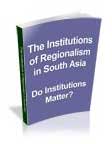 The Institutions of Regionalism in South Asia - Do Institutions Matter?This paper assesses the contribution of key institutions of regional cooperation and integration (RCI) in South Asia, and suggests ways in which the Asian Development Bank and other development partners can strengthen their support. It attempts to enhance understanding on the interplay between politics and RCI, including how good bilateral political relations or improvements have advanced RCI. With the overall political environment growing increasingly open to RCI, the paper suggests the time has come for the South Asian Association for Regional Cooperation (SAARC) to consider strengthening the capacity of the SAARC Secretariat to meet the growing challenges and work load of managing the anticipated increase in RCI. Author: Prabhu Ghate Year: 2011 Download Tags: Regional Cooperation, Regional Integration, Development, SAARC, Trade, Services, Trade Facilitation, Energy, Free Trade Agreements, SAFTA, Bangladesh, Bhutan, India, Maldives, Nepal, Sri Lanka, Transport Energy Trade in South Asia: Opportunities and ChallengesThe South Asia Regional Energy Study was completed as an important component of the regional technical assistance project Preparing the Energy Sector Dialogue and South Asian Association for Regional Cooperation Energy Center Capacity Development. It involved examining regional energy trade opportunities among all the member states of the South Asian Association for Regional Cooperation. The study provides interventions to improve regional energy cooperation in different timescales, including specific infrastructure projects which can be implemented during these periods. Author: Sultan Hafeez Rahman / Priyantha D. C. Wijayatunga / Herath Gunatilake / P. N. Fernando Year: 2011 Download Tags: Energy, Regional Cooperation, Regional Integration, SAARC, Trade, Bangladesh, Bhutan, India, Nepal, Maldives, Sri Lanka |



